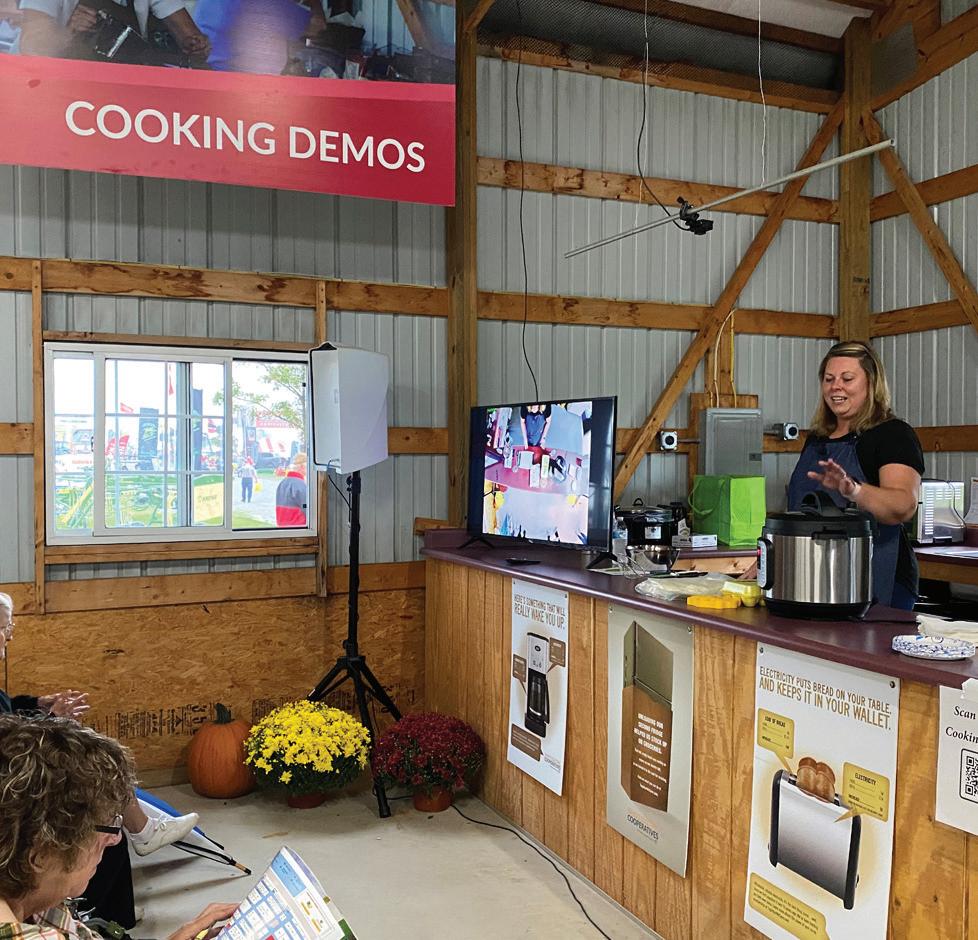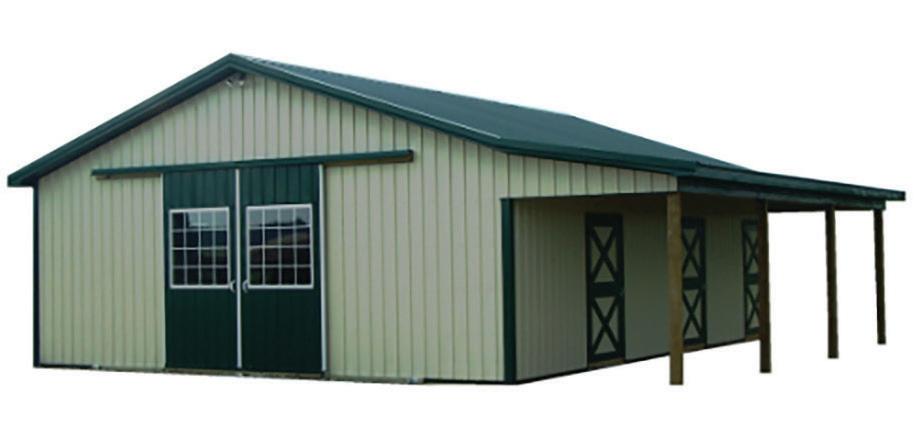
























22 NEVER FORGOTTEN
A family and community slowly recover after a tragic accident on a Mercer County farm.

27 NATURE CALLS

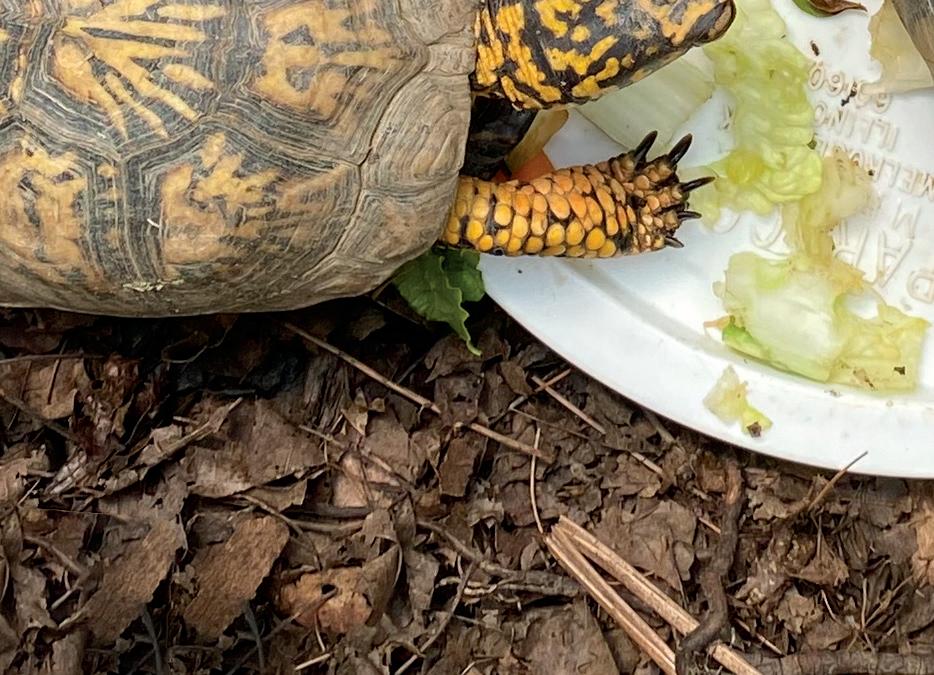

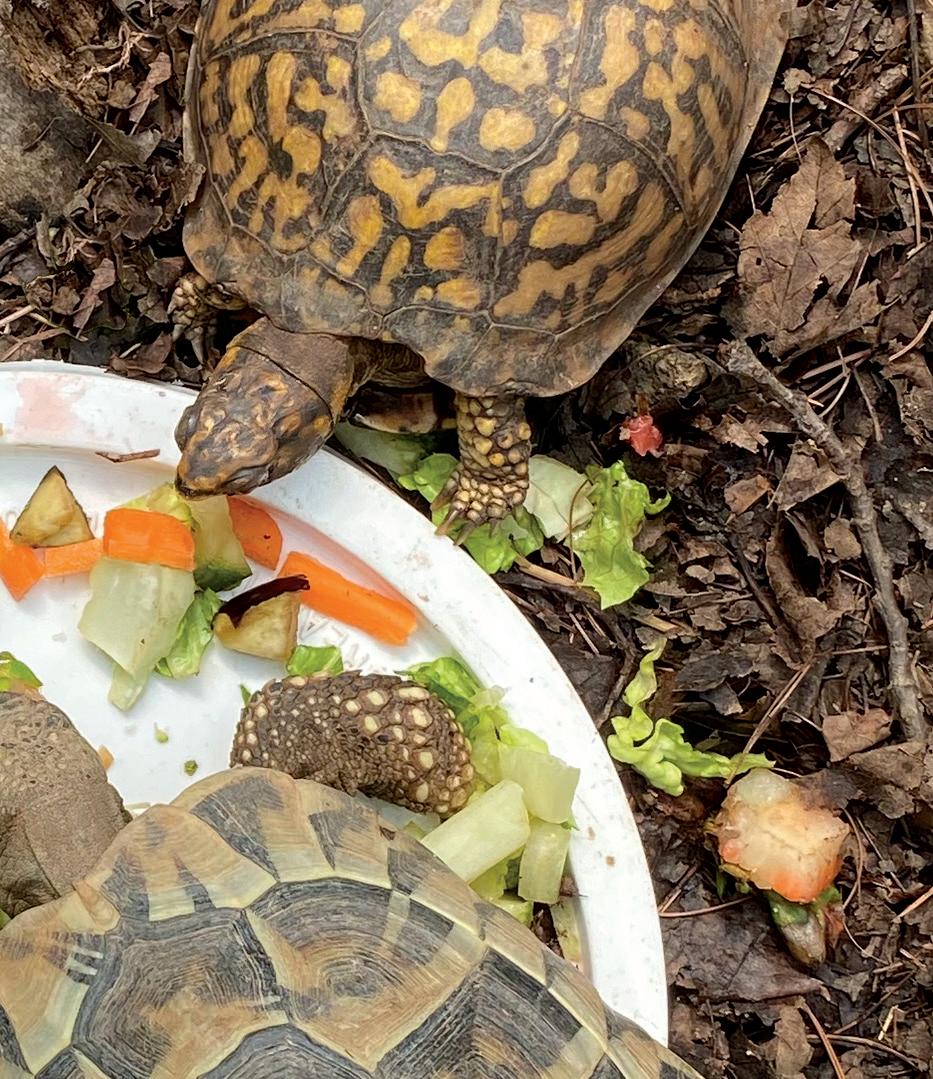

Beech Creek Gardens offers a multitude of sensory experiences in its 181 acres.
30 FRENCH CONNECTION
The influence of early colonization is still seen in pockets of Ohio.




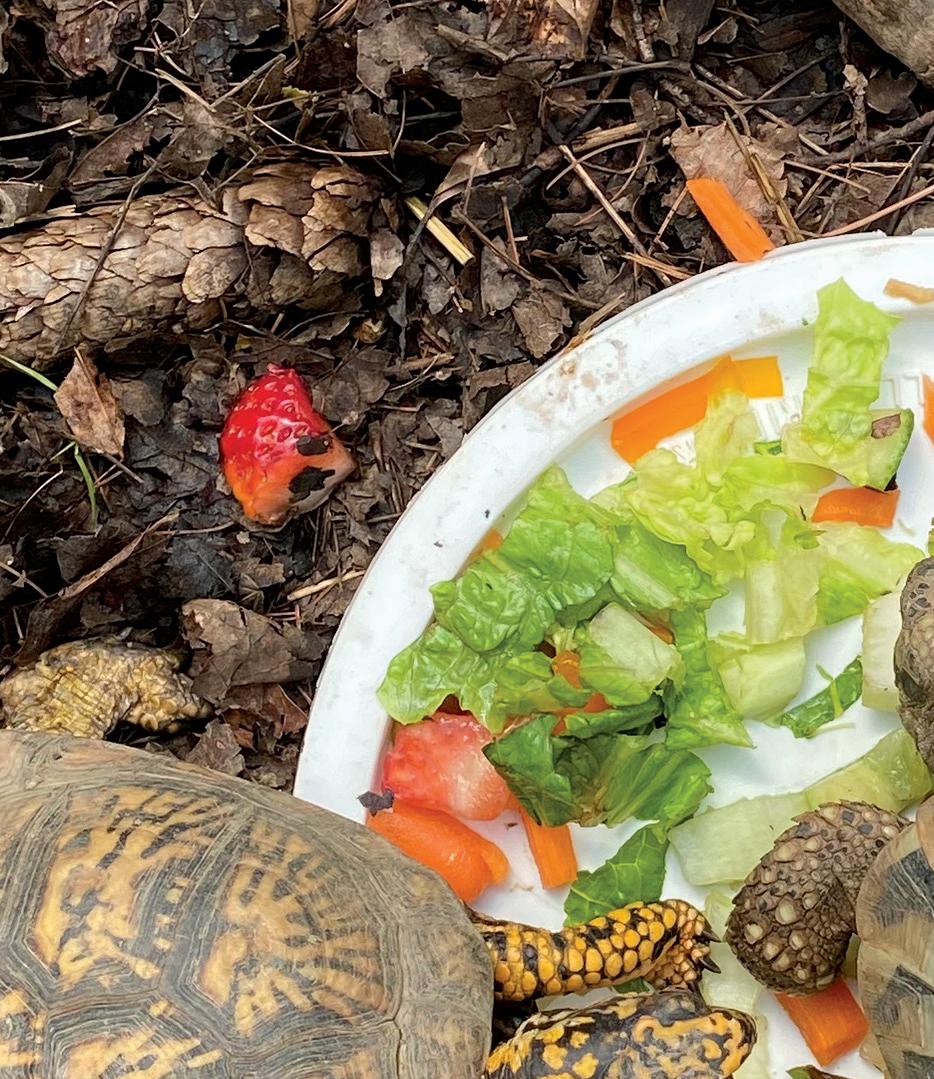

When we think about the people keeping our lights on, most of us think of the lineworkers who build, maintain, and repair the power lines running through our communities. Behind the scenes, though, it takes another crew of dedicated men and women to keep that power flowing — and that’s something we can all appreciate as we sit in our air-conditioned homes during the hot and humid “dog days” of summer.
Buckeye Power, the generation cooperative founded by all of Ohio’s electric distribution cooperatives, owns and operates three large (and quite different) power plants that produce the electricity we consume. Nearly 300 people work at those plants to make sure we can put electricity onto the grid the instant it’s needed. Their roles vary, but their mission is very much the same: to produce electricity in a safe, reliable, cost-competitive, and environmentally responsible way. The plants are led by a pair of managers who bring all those roles together to accomplish that mission — a complicated task, to be sure. Check out our story on page 4 to get to know them a little better and maybe get a glimpse behind the curtain of our operations.

Much of the work at our power plants is the routine, day-to-day business of generating electricity: providing fuel, monitoring equipment, and ensuring that the plant’s environmental controls are working as designed. But we also put a lot of work into planning for the future. Certainly, we examine what will be needed next week, next month, and for the upcoming winter, but we’re also looking years into the future to plan repairs, replacements, and upgrades of the many complex systems it takes to operate these large-scale electric generators and their necessary supporting equipment.
It takes a multitude of people with an incredibly diverse set of skills to supply the power your co-op delivers to you, reliably providing affordable electricity at the exact moment you need it — whenever that may be. Everyone plays an important role, so I’ll use this opportunity to honor the dedicated power plant employees at our Cardinal, Mone, and Greenville facilities. Thanks, team!
Pat O’Loughlin PRESIDENT & CEO OHIO’S ELECTRIC COOPERATIVES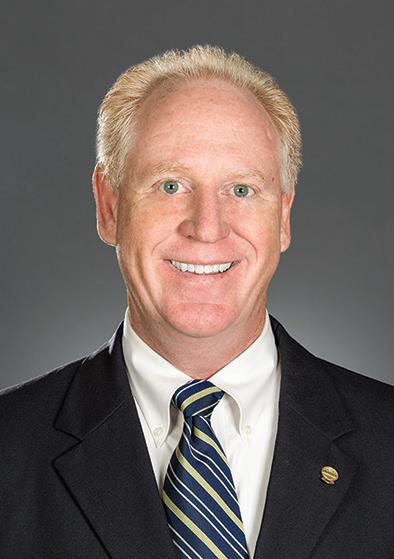
It takes a multitude of people with a diverse set of skills to supply the power your co-op delivers to you.
6677 Busch Blvd. Columbus, OH 43229 614-846-5757
www.ohiocoopliving.com

Patrick O’Loughlin President & CEO
Caryn Whitney Director of Communications
Jeff McCallister Managing Editor
Amy Howat Associate Editor
Crystal Pomeroy Graphic Designer
Contributors: Colleen Romick Clark, Randy Edwards, Michael A. Foley, Victoria Ellwood, Getty Images, W.H. “Chip” Gross, Catherine Murray, Damaine
Vonada, Kevin Williams, and Margie Wuebker.
OHIO COOPERATIVE LIVING (USPS 134-760; ISSN 2572-049X) is published monthly by Ohio Rural Electric Cooperatives, Inc. It is the official communication link between the electric cooperatives in Ohio and West Virginia and their members. Subscription cost for members ranges from $5.52 to $6.96 per year, paid from equity accruing to the member.
POSTMASTER: Send address changes to editorial and advertising offices at: 6677 Busch Boulevard, Columbus, OH 43229-1101. Periodicals postage paid at Pontiac, IL 61764, and at additional mailing offices. Nothing in this publication may be reproduced in any manner without written permission from Ohio Rural Electric Cooperatives, Inc. All rights reserved.
The fact that a product is advertised in Ohio Cooperative Living should not be taken as an endorsement. If you find an advertisement misleading or a product unsatisfactory, please notify us or the Ohio Attorney General’s Office, Consumer Protection Section, 30 E. Broad St., Columbus, OH 43215. Periodicals postage paid at Columbus, OH, and at additional mailing offices.
4 POWER LINES
Power brokers: The managers who oversee the generation of Ohio’s co-op electricity take their responsibility to heart.
8 WOODS, WATERS, AND WILDLIFE
Tastes like robin: The ubiquitous red-breasted songbirds, once considered a delicacy, were hunted nearly to the brink.

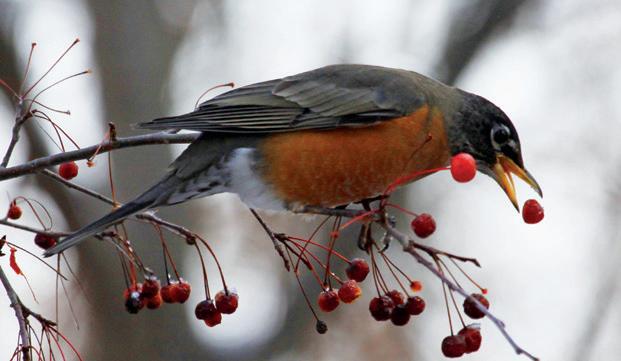
10 CO-OP PEOPLE

Past perfect: Slate Run Living Historical Farm perpetuates simpler life from a bygone era.

13 GOOD EATS

Pits top: Stone fruit might take a little extra work to prepare, but the reward is oh-so-sweet.

17 LOCAL PAGES
News and other important information from your electric cooperative.
33 CALENDAR
National/regional advertising inquiries, contact Cheryl Solomon
American MainStreet Publications
847-749-4875 | cheryl@amp.coop
Cooperative members: Please report changes of address to your electric cooperative. Ohio Cooperative Living staff cannot process address changes.
Alliance for Audited Media Member
8

10
What’s happening: August/ September events and other things to do around Ohio.

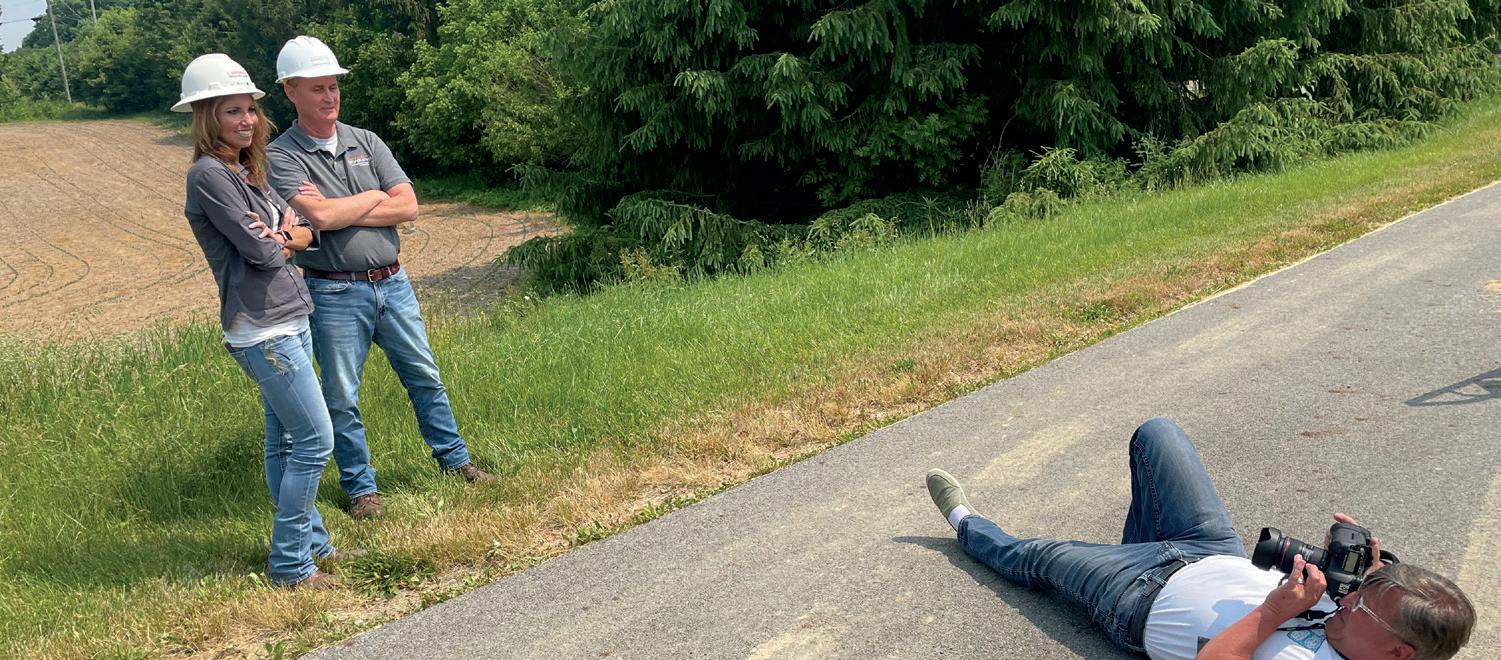
36 MEMBER INTERACTIVE
Vintage school days: Members take a look back at some happy childhood memories.
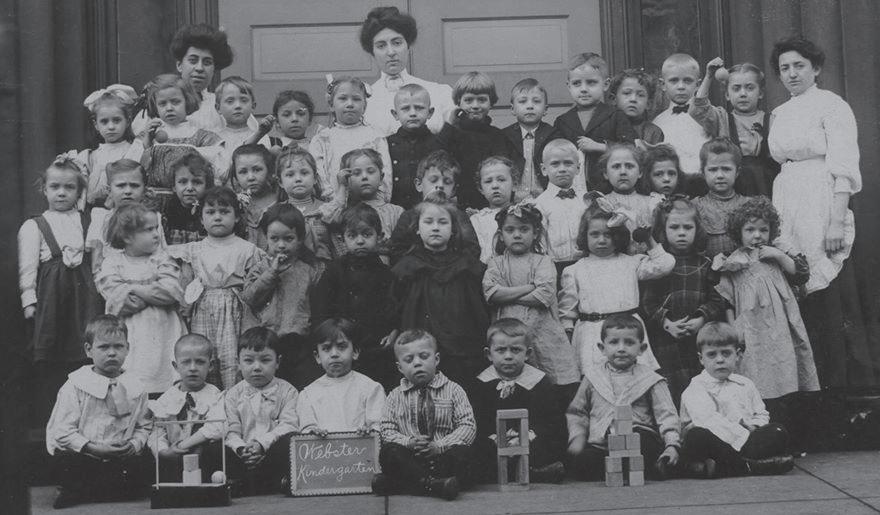
13
find content submitted by other co-op members across the state.

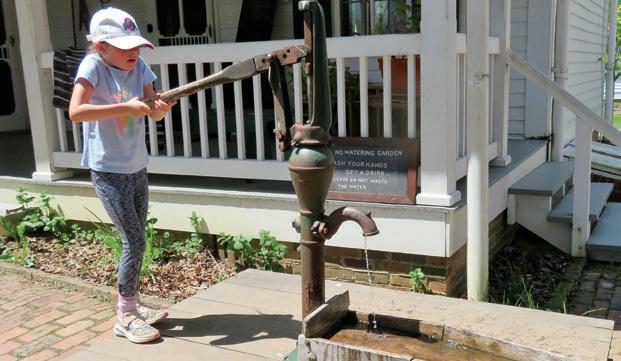
33
36
The managers who oversee the generation of Ohio co-op electricity take their responsibility to heart.







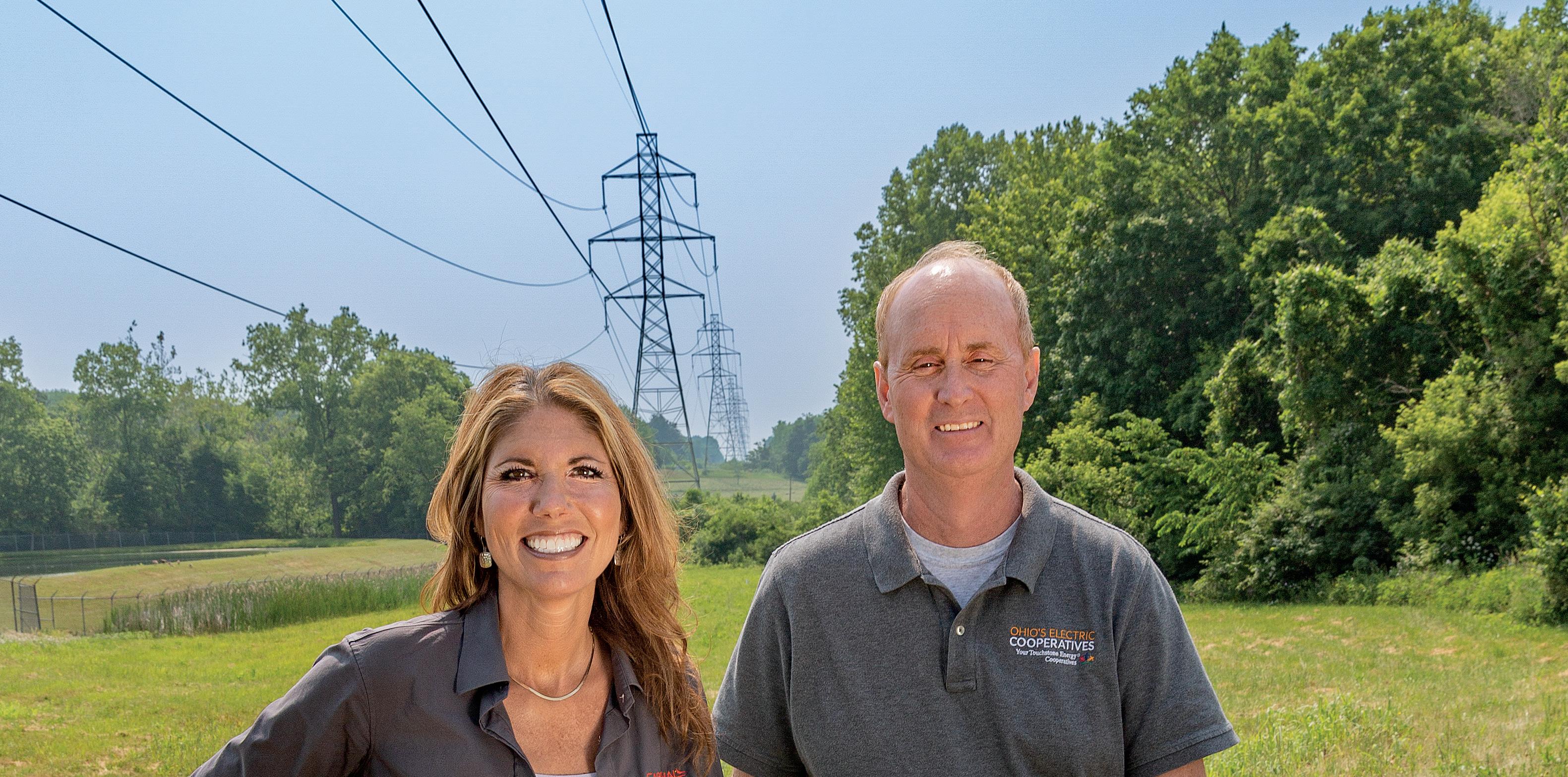 BY RANDY EDWARDS
BY RANDY EDWARDS
Electric power is a service that is simultaneously deeply appreciated and yet taken for granted. We may feel a general sense of safety and comfort when the kitchen lights brighten a dark winter morning, when we feel the relief of an air-conditioned room on a sweltering summer afternoon, or when a shopkeeper switches on the security system at the end of the workday. It’s rare, though, that we give a thought to the source of that sense of well-being, and that’s an irony that David Richardson and Bethany Schunn have come to accept.
From opposite sides of Ohio, Schunn and Richardson manage the power plants that provide most of the electricity to the 25 electric distribution cooperatives served by Buckeye Power. About 1 million Ohioans depend on the reliable, affordable power they send to about 400,000 homes, farms, and businesses.
“We all take electricity for granted, until you’re at your own house and you lose it, and then you say, ‘Where’s the power company?’” laughs Schunn, plant manager for the Cardinal Power Plant in Brilliant, a small town on the Ohio River in eastern Ohio. Cardinal’s three coalburning units produce up to 1,800 megawatts of power at a given moment. It’s the main baseload generating plant for Buckeye Power.
About 250 miles to the west (and about 70 miles from one another), the Robert P. Mone Plant in Convoy and the Greenville Generating Station in Greenville are managed by Richardson. These natural-gas-burning facilities are “peaking plants” — fired up during periods of particularly high demand, or when other sources go offline.
The baseload plant and the “peakers” are vastly different in terms of how, when, and why they produce power. Their managers, likewise, have taken much different career paths to get to their current positions. Neither, however, considered the energy business as a career, starting out.
Schunn, 41, is originally from Wheeling, West Virginia, where her mother was in banking and her father was the sports editor at the local paper.
She planned to be a pharmacist, but after getting an undergraduate degree in chemistry, she began working as a laboratory chemist. That, in turn, led to a job at American Electric Power’s Conesville Power Plant near Coshocton. After working in the lab there for a while, she took over supervision of the equipment that removes sulfur dioxide from the plant’s emissions.
Along the way, she married, picked up a master’s degree in business, and had three children.
“I never thought, when I was in school, that I would work at a power plant, let alone make it a career,” she
says. “I didn’t even know they had a lab in a power plant. But it’s been so rewarding. You learn the process and you learn how you help people.”
After a dozen years with AEP, she had risen to the position of maintenance superintendent at Conesville when Buckeye Power hired her in 2017

Buckeye takes charge
AEP and Buckeye Power had always had a unique — and beneficial — relationship at Cardinal: The investor-owned AEP and member-owned Buckeye had split ownership of the units since the plant opened in 1967, and AEP, using its long history and expertise, operated the units on behalf of both entities from the beginning.
When AEP decided to abandon its generation business in Ohio, Buckeye Power agreed to take over operations and hired Schunn to help manage the transition. (Buckeye Power also bought AEP’s remaining stake in the generating units in 2022.) A few months after the transition was completed in March 2018, Schunn was promoted to plant manager when former manager Chuck George retired. With nearly 300 employees and power production happening 24 hours a day, seven days a week, Cardinal is a bustling industrial megalopolis on the banks of the Ohio River. About 25 trucks and eight river barges arrive daily, delivering the roughly 15,000 tons of Ohio, Pennsylvania, and West Virginia coal the plant typically burns over a 24-hour period. More trucks carry away the fly ash that’s produced as the coal burns, to be sold and made into concrete; and gypsum, a byproduct of the flue-gas desulphurization scrubbers, is loaded onto barges and taken away to produce wallboard.
That hustle and bustle is in sharp contrast to the peaker plants, which get their fuel delivered by underground gas lines, so few trucks go in and out. Also, unlike Cardinal, the Mone and Greenville plants typically don’t run 24/ 7, and instead are on constant standby to add power to the grid on a moment’s notice when the need arises. Their turbines are designed to be started quickly — in a matter of minutes — as soon as that call comes in, Richardson says. Between them, the two gas-fired plants host a total
of seven generating units and, combined, can produce up to 710 megawatts of electricity.

And they’re not as labor-intensive as a coal plant, either. Each peaking facility operates with a small staff of technicians who rotate their shifts between morning and evening. “Everything is automated here,” Richardson says. “Once we get the call to run and hit the start button, we can hit our max load of 50 to 60 megawatts per unit at Greenville in 15 minutes; at Mone, we can go from zero to 150 or 180 megawatts on each unit in less than 30 minutes.”
Though the peakers operate as needed, that does not mean “rarely.” The plants are in use between 100 and 150 days of the year, and sometimes, they are fired up several times in one day. When the turbines are not spinning, the small staff is maintaining the plant, keeping the units in top condition to be always at the ready.
Richardson and the teams at the peaker plants recognize that their power is often needed at unplanned and inconvenient times, and they take it in stride. “I’ve heard the guys say it: We’re like the fire department,” Richardson says. “We get called on when there’s an emergency, or when it’s extremely cold or extremely hot, and we know that if we can’t run, we’ll be hurting people. We all have that in the back of our heads.”
Richardson, 59, is a first-generation college graduate who lives just across the border in Indiana, with his wife of 37 years (the couple has two grown children). After earning an engineering degree from Purdue University, he worked in construction, in the petrochemical industry, and for other utilities before landing at Dayton Power & Light (now AES Ohio), which operated the Greenville plant at the time. His path to Buckeye Power, not unlike Schunn’s, involved the transfer of ownership and operation, in this case from
DP&L to AEP and, in 2018, to Buckeye. Having worked for investor-owned utilities, merchant plants, and electric cooperatives, Richardson says he prefers the co-op model.
“In an investor-owned utility, the CEO’s main job is to keep the stock price high and the investors happy,” he says. “At Buckeye, it’s all about the co-ops and their members. Our goals are to focus on safety, reliability, and affordability and to make sure our operations are environmentally sound.”
Both managers understand customers don’t think much about their electric power until something goes wrong — but that only increases their sense of mission and their pride in the teams they lead.
Last December, as many co-op families prepared for the holidays, a “bomb cyclone” hit much of the eastern U.S., bringing sub-zero cold and howling winds on Christmas Eve. As the deadly storm approached, PJM Interconnection (the regional transmission organization that coordinates grid reliability) called for every generating station in the system “to come online and provide as much output as they could,” Schunn recalls.
As Ohioans battened down the hatches and bundled up, the crews at Cardinal, Mone, and Greenville went into overdrive. “We ran 24/7 at both plants for at least a week,” Richardson says. “Nobody spent Christmas at home, that’s for sure.”
Schunn credits early seasonal winterization efforts by workers at Cardinal for the fact that the plant was able to operate at full capacity throughout the weather emergency.
“I was very proud of our team. First of all, it’s Christmas. No one wants to be working. And it’s cold as hell. But we were one of the very few plants (in the 13-state PJM network) that didn’t go offline or experience curtailments.
“That Christmas, they really needed us, and we were able to provide,” she says. “I’m really proud of that.”



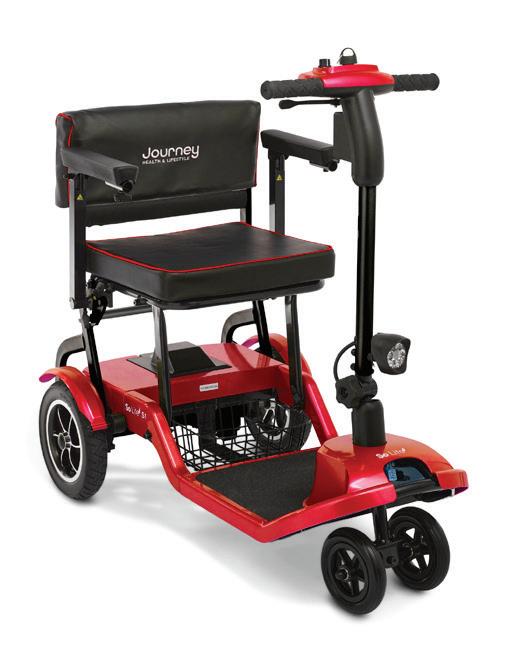

Like millions of older Americans, I struggle with mobility. For years, I watched my quality of life slip away, as I was forced to stay home while friends and family took part in activities I’d once enjoyed. I thought I’d made some progress when I got a mobility scooter, but then I realized how hard it was to transport. Taking it apart and putting it back together was like doing a jigsaw puzzle. Once I had it disassembled, I had to try to put all of the pieces in the trunk of a car, go to wherever I was going, and repeat the process in reverse. Travel scooters were easier to transport, but they were uncomfortable and scary to drive, I always felt like I was ready to tip over. Then I found the So Lite® Scooter. Now there’s nothing that can hold me back.

Years of work by innovative engineers have resulted in a scooter that’s designed with seniors in mind. They created Electronic Stability Control (ESC) that makes it virtually impossible to tip over. If you try to turn too quickly, the scooter automatically slows down to prevent it from tipping over. The battery provides powerful energy at a fraction of the weight of most batteries. With its rugged yet lightweight
aluminum frame, the So Lite® Scooter is the most portable scooter ever—but it can hold up to 275 pounds—yet weighs only 40.8 pounds without the battery! What’s more, it easily folds up for storage in a car seat, trunk or even on an airplane. It folds in seconds without tools and is safe and reliable. Best of all, it’s designed with your safety in mind, from the newest technology and superior craftsmanship. Why spend another day letting your lack of mobility ruin your quality of life? Call now and find out how you can get a So Lite® Scooter of your very own.


Hunting earthworms on our lawns or building nests in our shrubbery, robins are so ubiquitous today that we barely give those attractive, redbreasted songbirds a second thought. But there was a time when they weren’t so common, and the reason is shocking: Robins were once hunted and eaten by humans.

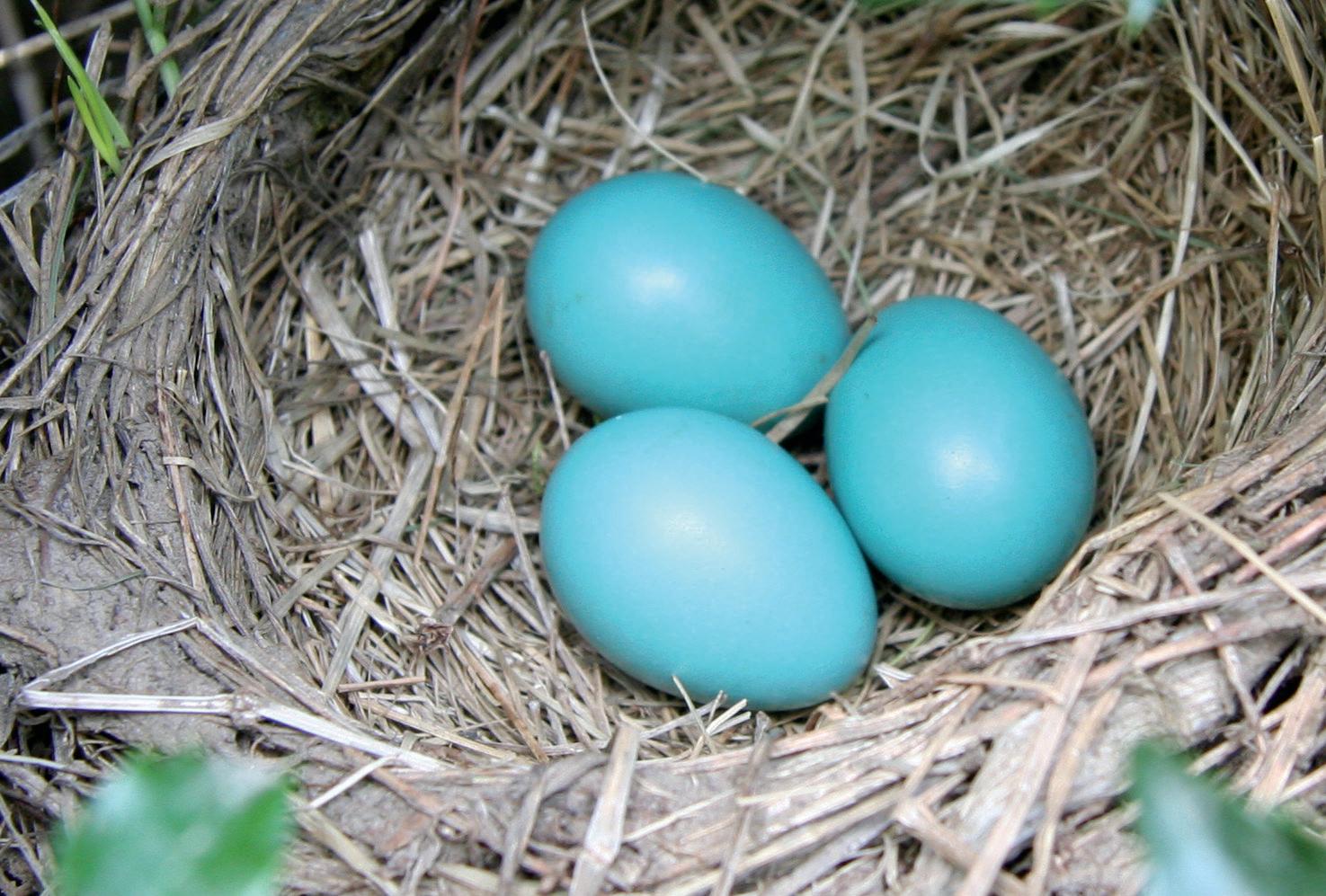


The late 1800s and early 1900s was the era of the market hunter in America. With few laws yet in place to protect wildlife, anything and everything was fair game. Any wild animal that could be killed and sold for profit was in jeopardy.
The slaughter began with large mammals — elk and deer in the East, bison in the West. Once those populations were decimated, the professional hunters moved on to

waterfowl: ducks, geese, and swans. After those species were depleted, shorebirds were next in line. Smaller than most waterfowl, shorebirds made up for their small size by numbering in the millions. They also decoyed readily and tasted good on the dinner table.
Last on the list was songbirds.



It was not just country folk who consumed songbirds. Big-city gourmands enjoyed noshing on them, too, and robins were at the top of their list. In fact, the American robin became the standard against which most other small birds were measured, gastronomically speaking.


In 1867, a New York butcher named Thomas F. DeVoe authored The Market Assistant: A Brief Description of Every Article of Human Food Sold in the Public Markets of New York, Boston, Philadelphia, and Brooklyn.

The ubiquitous red-breasted songbirds, once considered a delicacy, were hunted nearly to the brink.
In his treatise, DeVoe devoted a portion to songbirds, opining that blue jays, for example, were tasty, but “not so well flavored as the robin.” He also said that the highhole (known today as the Northern flicker) was “not so tender as the robin.”
DeVoe went on to add that “large numbers of [robins] are found in our markets, and thousands are also shot by sportsmen in the months of September and October, when they are fat and delicate eating.”
In the 20th century, both subsistence hunters and market hunters plied their trades in some Southern states, where wintering robins gathered by the hundreds of thousands in nighttime roosts. Working in teams, one person with a torch would climb a tall tree while others on the ground with clubs and long poles startled the roosting birds into flight. Drawn to the torch’s light shining near the top of the tree, robins were grabbed by hand, killed, and shoved into a sack. One team could bag 300 to 400 robins per night, and with as many as 100 or more hunters with torches and clubs at work in a given spot, robins were killed by the wagonload.
Robin hunting became so pervasive throughout the South, where some states had declared the species a gamebird, that the National Association of Audubon Societies (today known as the National Audubon Society) finally stepped in. The organization worked with teachers in the region to create grade-school clubs encouraging “sympathy for birds.” That effort eventually became the successful Junior Audubon program.
What ultimately ended the commercialization of robins and other songbirds was the passage of the federal Migratory Bird Treaty Act in 1918. The new law was somewhat misleading in its title, as it protected all native North American birds with the exception of nonmigratory gamebirds (the sport hunting of which today is still regulated by state wildlife agencies).
The good news is that robin populations have since recovered and are once again healthy and flourishing. “The best way to realize how abundant they are is to listen to the spring and summer dawn chorus, when most birds are in full voice,” said Jim McCormac, author of the field guide Birds of Ohio. “American robins generally greatly outnumber all other singers.”
Ohio’s most well-known market hunter was a rather diminutive young woman from Darke County who shot bobwhite quail and other birds on the wing, which she sold to upscale restaurants in the Cincinnati area to help support her struggling family. Her name was Phoebe Ann Mosey, but she was better known by her pseudonym, Annie Oakley (1860–1926).

W.H. “Chip” Gross is Ohio Cooperative Living’s outdoors editor. Email him with your outdoors questions at whchipgross@gmail.com. Be sure to include “Ask Chip” in the subject of the email. Your question may be answered on www.ohiocoopliving.com!
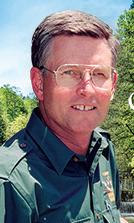
www.ohiocoopliving.com







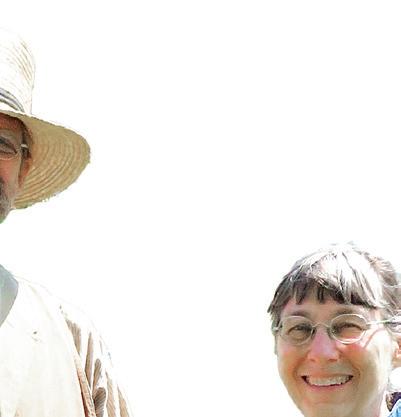
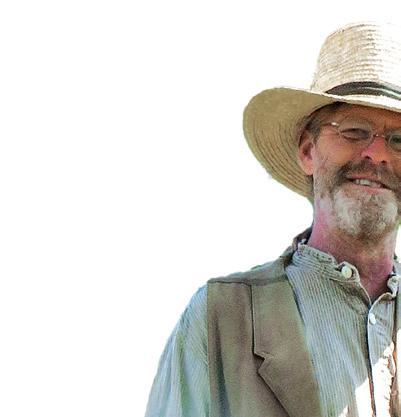 STORY AND PHOTOS BY DAMAINE VONADA
STORY AND PHOTOS BY DAMAINE VONADA


“Where do the batteries go?” Ann Culek always smiles when she recalls the curious little boy who couldn’t figure out the workings of an oldfashioned marble run one afternoon in the farmhouse at Slate Run Living Historical Farm. Culek, the site’s program manager, patiently explained to him that in the 19th century, toys did not have batteries.
“At Slate Run farm,” she says, “everything we do is about recreating what life was like on an Ohio farm in the 1880s.”


Operated by Columbus and Franklin County Metro Parks, the farm is part of Slate Run Metro Park, situated in the splendidly scenic countryside between Circleville and Canal Winchester. It’s a South Central Power Company member, but because the farm preserves the lifestyle of an era before electric cooperatives served rural Ohio, visitors never see so much as a light switch, let alone the modern office equipment that occupies the farmhouse’s second story.
Instead, they experience a bygone time by watching a historic interpreter in period costume strike a match to light an oil lamp; by smelling smoke from the woodstove in the kitchen where another interpreter is baking cornbread for dinner; by tasting heirloom apples freshly picked in the orchard; by touching just-laid chicken eggs that still feel warm; and by hearing the incessant clatter of a threshing machine powered by the brawny team of Percheron horses named Marcus and Bob.
“Slate Run farm’s staff is willing to do things the hard way and to do the research needed to accurately present the past to the public,” Culek says. “Almost everyone working here has a background in education, history, or science education.”
Located on land that has been farmed since 1805, Slate Run is on the National Register of Historic Places, and its buildings are typical of a late 1800s farmstead. The Gothic Revival-style farmhouse was constructed in 1856, but its furnishings — which include a square piano and a stereoscope in the parlor — epitomize middle-class Ohio households circa 1880. “The 1880s were a heyday for Ohio because the state was an agricultural, industrial, and political power,” Culek says. “Ohio’s Rutherford Hayes was elected president in 1876, followed by another Ohioan, James Garfield, in 1880.”
By the 1880s, canals and railroads also had tied Ohio agriculture to the market economy, and during that decade, Samuel Oman and his wife, Mary, lived and worked on the land that became Slate Run farm. “We know from agricultural census records that the Omans annually shipped about 600 pounds of butter to Columbus and raised three litters of hogs that they sent to Cincinnati,” Culek says. In addition, the Omans constructed the red, cupola-topped barn, which is still in use at Slate Run, in 1881. The barn has hand-hewn beams and mortise-and-tenon joinery, and the Omans built it big enough for housing livestock, stockpiling straw and hay, and storing the equipment needed to grow oats, wheat, and other crops.
Because of Slate Run’s emphasis on authenticity, all its animals and plants were common on Ohio farms during the 1880s. That’s why you’ll see heritage breeds such as Merino sheep, which were prized for their fine wool, grazing in the pastures; brown Buckeye chickens, which provided meat as well as eggs, pecking in the poultry yards; and fat Poland China hogs, which were developed in southwest Ohio in the 1840s, wallowing outside the hog shed. Since farm families once used Poland China lard for everything from cooking to greasing their shoes, Slate Run’s educational programming even includes a hands-on laundry day that includes pig fat. People get to help the farm wife by scrubbing clothes on a wooden washboard, and they see how farm families made their own soap from lard and lye.
Understanding that doing the laundry once meant spending an entire day bent over a washtub is only one of the lessons that Slate Run teaches about farm life before electricity, mechanization, and indoor plumbing. By working the hand pump in the farmhouse yard, visitors learn that getting water was once quite a chore. The root cellar illustrates how families like the Omans kept carrots, turnips, and beets in sawdust because they had no refrigerators or freezers. And since the farmhouse lacked air conditioning, they habitually tried to beat the heat by disassembling the cookstove and moving it into the summer kitchen — a separate structure where Slate Run interpreters now
demonstrate how farm wives managed to feed their families year-round by preserving vegetables, pickles, and jams in glass jars.
A visit to Slate Run also helps develop an appreciation for how the everyday rhythms and routines of farming vary with the seasons. As a result, says Culek, “People tell us that no matter how many times they come here, they always find something different or new.”
For example, those who visit in the spring will see frisky piglets that were born on the farm; by summer, those same piglets will have grown portly and enjoy a snooze in the shade, and in December, they’re hanging in the smokehouse. Both guided and self-guided tours of the farm are available, and since admission is free and there’s no gift shop, visitors never have to stand in a line or open their wallets to journey into yesteryear.

“There is nothing for sale,” Culek says.
“This is a place for families to step back and enjoy time together; to play on a rope swing or try walking on stilts; and to discover the past.”
Slate Run Historical Farm, 1375 State Route 674, Canal Winchester, OH 43110. Open 9 a.m.–6 p.m. Tuesday, Wednesday, Thursday, and Sunday and 9 a.m.–7 p.m. Friday and Saturday from April 1 to Sept. 30; hours change for fall and winter, and some activities are limited and buildings closed from January through March (check website for details). 614-833-1880; www.metroparks.net/parksand-trails/slate-run-historical-farm.
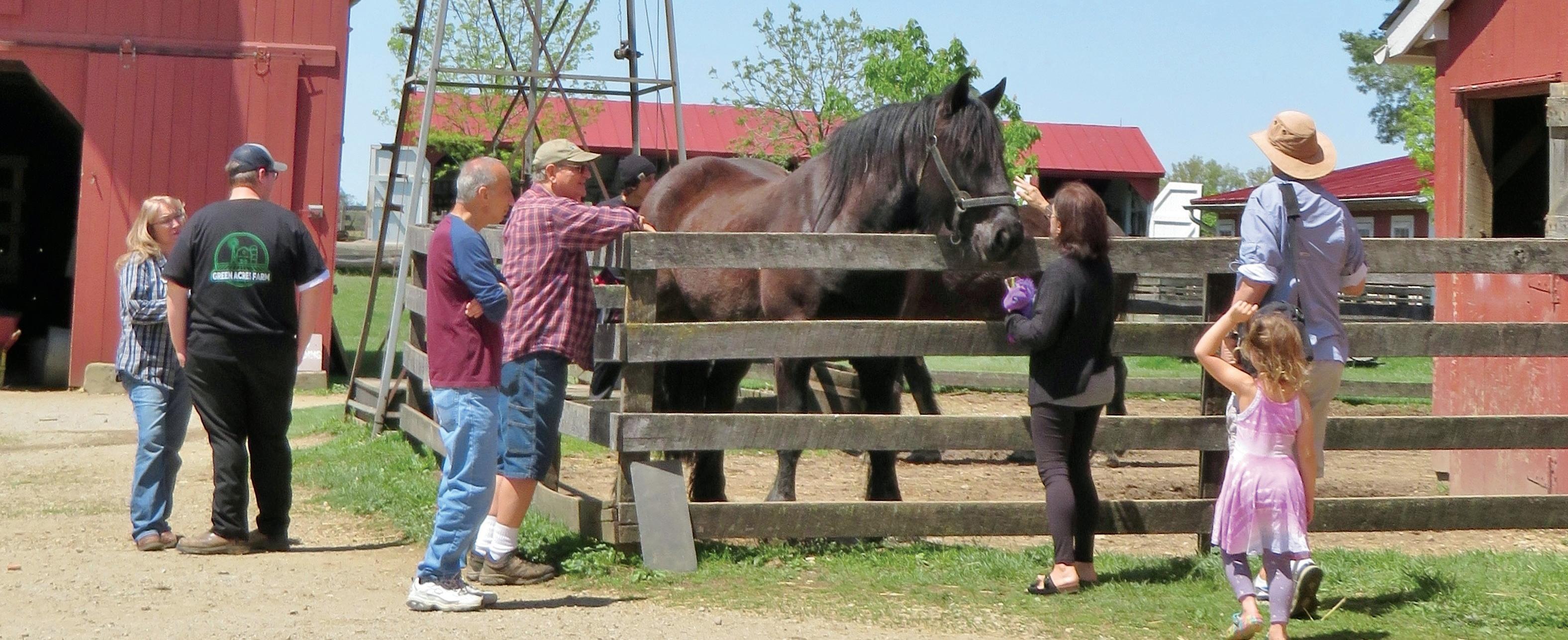



We know you are seeking new ideas to gain an edge and ensure your business thrives. Ohio Farm Bureau is evolving and growing to meet your needs with insights and business solutions to help grow your bottom line and stay a step ahead. Feeding your need for new ideas.










Drunken cherries add a special punch of flavor to ice cream, pound cake, rice pudding, pavlovas, and hot chocolate. (Shown over vanilla ice cream with toasted pecans and shaved dark chocolate.)






Prep: 15 minutes | Cook: 5 minutes | Servings: 8
1 cup brandy, bourbon, or spiced rum (medium- or low-cost)
1⁄3 cup sugar


1½ cups fresh sweet cherries

In a small saucepan, simmer alcohol and sugar, stirring over low heat until sugar has fully dissolved. Turn off heat and let sit 15 minutes. Wash, pit, and de-stem cherries. Pack cherries into a 16-ounce Mason jar. Pour syrup over cherries, making sure they’re fully submerged. Cover with lid and ring and let cool to room temperature, then store in fridge for up to a year. Soak overnight at a minimum before eating; a few weeks or longer is optimum. Per serving: 122 calories, 0 grams fat, 0 milligrams cholesterol, 0 milligrams sodium, 13 grams total carbohydrates, 0.5 gram fiber, 0 grams protein.


Stone fruit might take a little extra work, but the reward is oh-so-sweet.
Prep: 15 minutes | Servings: 4
2 fresh mangos, cubed
¼ cup olive oil

1 handful cilantro
1 lime, juiced
3 tablespoons honey
3 tablespoons

minced red onion
¼ teaspoon salt




¼ teaspoon pepper


1 large avocado, sliced
1 pint cherry tomatoes, halved
7 ounces arugula
With a blender, immersion blender, or food processor, puree ¼ cup of the cubed mango along with olive oil, cilantro, lime, honey, red onion, salt, and pepper for dressing and set aside. Make a bed of arugula and layer remaining salad ingredients on top. Drizzle with dressing and serve.

Per serving: 391 calories, 21 grams fat (4 grams saturated fat), 0 milligrams cholesterol, 174 milligrams sodium, 55 grams total carbohydrates, 12 grams fiber, 6 grams protein.
Have you tried one of our recipes? Do you have a recipe to share with other Ohio co-op members? Visit the Member Interactive page on www.ohiocoopliving.com to find recipes submitted by our readers and to upload yours.
www.ohiocoopliving.com
While you’re there, check out a video of a few of our recipes being prepared.
Prep: 30 minutes | Bake: 40 minutes | Servings: 6
1½ cups flour
5 tablespoons brown sugar, divided *
½ cup salted butter, cold, sliced thinly
6 tablespoons ice cold water
1 pound ripe peaches
½ pound ripe apricots (or plums)
1 tablespoon lemon juice
1 tablespoon cornstarch *
1 egg, lightly whisked (optional)
* Any ratio of peaches, apricots, and/or plums will work in this recipe, but you may need to adjust cornstarch and sugar amounts. Taste to get a sense of how tart and juicy they are and use more sugar if the mixture is extra-tart and more cornstarch if it’s extra-juicy.
With your hands, lightly combine flour, 3 tablespoons brown sugar, and butter until it resembles crumbles. Using your hands, mix a tablespoon of water into dough until it begins to form and stick together. Dust a flat surface with flour. Roll out dough to 1/8-inch thick in an oval shape. Transfer to a baking sheet. (If room temperature is above 75 F, you may want to pop the dough in the fridge while you work on the next step.)
Preheat oven to 400 F. Slice peaches and/or plums into wedges lengthwise and apricots in half lengthwise. Toss in a bowl with lemon juice, the remaining 2 tablespoons brown sugar, and cornstarch. Fill center of dough with fruit, leaving a wide rim of dough uncovered around the edge. Fold sides of dough up over the fruit, leaving the center open. Brush dough with egg wash (optional) and bake 30 to 40 minutes, or until pastry is golden and fruit is bubbling and beginning to wrinkle. Let cool, slice, and serve.

Per serving: 322 calories, 17 grams fat (10 grams saturated fat), 68 milligrams cholesterol, 123 milligrams sodium, 39 grams total carbohydrates, 2 grams fiber, 5 grams protein.

Prep: 15 minutes | Bake: 50 to 60 minutes | Servings: 6
1 cup packed brown sugar, divided
½ cup milk
½ cup dates, finely chopped
½ cup prunes (dried plums), finely chopped
1 cup flour
1 teaspoon baking powder
1 teaspoon allspice
¾ cup coarsely chopped pecans and/or walnuts
½ cup white sugar
1 teaspoon salt
1 tablespoon vanilla
1½ cups boiling water whipped cream (optional)
In a medium bowl, mix ½ cup of the brown sugar into milk, then add the chopped dates and prunes. In a small bowl, mix flour, baking powder, and allspice, then incorporate into fruit mixture. Spread evenly into the bottom of an ungreased 9-inch square baking dish and sprinkle nuts on top.
In the now-empty medium bowl, combine remaining ½ cup brown sugar with white sugar and salt. Mix vanilla and boiling water into sugar mixture until sugar is dissolved. Pour mixture over the nuts. Bake at 350 F for 50 to 60 minutes, until bubbly and slightly jiggly. Let cool for 10 minutes before serving. Top with whipped cream, if desired. Store leftovers in the refrigerator and reheat in microwave.
Per serving: 375 calories, 5.5 grams fat (0.5 gram saturated fat), 2 milligrams cholesterol, 406 milligrams sodium, 79 grams total carbohydrates, 3 grams fiber, 5 grams protein.















Geothermal heat pumps circulate water underground to provide the ultimate in energy-efficient heating and air conditioning. Radiant systems circulate water throughout your floors to provide the ultimate in luxurious comfort. WaterFurnace’s new HydroLogic radiant panel married to our 5 Series OptiHeat unit is simply the easiest way to combine the two worlds. You’ll love your warm, toasty floors—and you’ll adore your utility bill. Contact your local WaterFurnace dealer today to learn more.

This August, we invite you to stop in and cool down with frozen treats (ice cream bars, etc.), compliments of your cooperative. While you're here, each member will be able to enter to for the chance to win one of two $100 00 energy credits.
In an effort to thank as many members as possible, we’re holding this member appreciation event during our regular o ce hours throughout the entire month of August.
Whether you’re just passing through the area, dropping by to pay your bill, or simply have a question about your account, we encourage you to stop in for an ice cream treat or a refreshing drink.
Looking for a reason to get out of the house before the new school year begins? Bring the kids for ice cream! Talk with your kids about energy and bring in the Energy Explorer quiz on page 18 A for a free kids' gift.

While you’re here, feel free to ask us about convenient payment options, marketing rebates, energy e ciency, or any other questions you may have about your service.





We’re local, available, and here for our members and we hope to see you in August!

“When I was a kid, I dreamed of one day having a home where I could pay my own electric bill.” Said no one, ever. While it’s not the most fun way to spend money, people typically want to live in a home with electricity. Educating children about energy use and costs can help engage them in your family’s goal to use less electricity. They can be electric conservation champions if you ask them to help. Here are some ways you can teach kids to save electricity:
Show them how to read the electric bill. (Check out the billing breakdown on the reverse-side of your monthly bill!) Focus on what you can control: kilowatt-hour use. If they are old enough, teach them how to do the math. You can calculate kWh use by multiplying wattage by hours
used and dividing by 1,000. Multiply this by the kWh rate found on your electric bill to estimate how much you spend on power for each household appliance.

For example, if you have a space heater that uses 1,500 watts and is on for four hours a day for a month, it uses 180 kWh. With an average kWh rate of 12.8 cents in Ohio, the space heater costs about $23 a month to operate. That same space heater costs about $70 a month if it is on for 12 hours per day. Your kWh rate may be lower or higher depending on where you live.

For household appliance wattage, look for the amount stamped on the bottom, back, or nameplate. If the nameplate does not include wattage, figure it out by multiplying the voltage by the amperage.

To teach children the impact of saving energy, have them help you conserve with the household’s biggest energyconsuming appliances: heating and cooling systems. Teach kids to dress appropriately for the seasons, even when they are indoors, which allows you to set the thermostat to balance comfort and savings.

In the summer, you can also leave the house during the hottest times of the day to go for a swim or play outside. Before you go, nudge the thermostat up a few degrees to avoid wasted energy cooling an empty house. Turn off fans when you leave a room.
The second-highest user of electricity is typically an electric water heater. Use a shower timer so bigger kids can monitor how long they are in the shower. Also, teach them to wash their clothes with cold water.
Other ways to save include turning off the lights when you leave the room. The more we switch to LEDs, the less savings can be found in lighting, but even little changes can add up throughout the year.
Powering down gaming stations and computers is another way to save. In the kitchen, keep the refrigerator door shut. Teach kids to take a quick peek and shut the door while they think about their snack options.
After teaching your kids about electric bills and showing them how to save electricity, make a game out of your family’s energy conservation efforts. Challenge the family to use less energy than last month or the same month last year. You can use the savings to reward children with a treat.


We aren't forgetting about our littlest members during member appreciation month. Have your energy explorers fill out the energy quiz below and bring it to one of Mid-Ohio Energy's offices during August to receive a FREE KITE! See page 17 for more information.




You may have noticed a small, gray box located on your water heater, heat pump, and/or geothermal unit, but did you know that box plays a key role in keeping your energy costs affordable?
The box, known as a “radio-controlled switch,” or RCS, is a key component of the co-op’s load management system for reducing our overall system load during peak hours.
At times when energy use on the grid is at its highest, a signal can be sent to these switches to temporarily cut power to the connected appliance. As a result, the demand for energy can be more easily predicted and managed.

By reducing our system’s energy footprint during peak times, we can avoid costs associated with high grid demand and/or securing additional power generation. The result is lower costs for all of our members!
Electricity cost is highest when demand is greatest. The maximum, or “peak,” amount of electricity used determines Mid-Ohio Energy’s future cost of power. When the peak goes up, so does the cost — for all of our consumer-members.
The co-op may enact load management or issue a “peak alert” notice when the demand for electricity is very high and potentially rising toward a new peak.

“Peak alerts” typically occur during regional weather extremes, typically in the warmest summer afternoons between 1 and 6 p.m. Control periods are enacted in less than 1% of all the hours in a year.




During these times, we ask our members to reduce their energy consumption in order to help avoid reaching a new peak.




By performing some of your daily chores (such as running the dishwasher or doing laundry) during off-peak hours when people are generally using less electricity, you can help keep electricity rates lower. Another way to help could be to set your programmable thermostat to adjust the settings so that your air conditioning system syncs with the off-peak periods. Use automatic timers to run hot tubs, pool pumps, water heaters, and other appliances in the same way.
As an added bonus, Mid-Ohio Energy offers energy credit rebates to members as a way to encourage involvement in the load management program while incentivizing upgrades to new (more e cient!) appliances such as water heaters and heat pumps. Visit MidOhioEnergy. com/rebates for a full list of available marketing rebates.

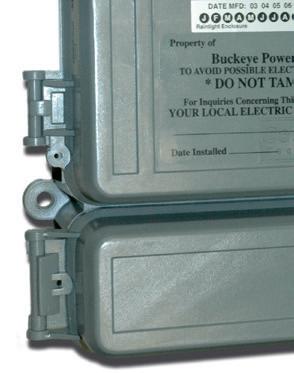
Mid-Ohio Energy currently has more than 4 , 500 radiocontrolled switches on various appliances throughout our system. As a member, you may currently have one or more load management switches (pictured below) in your home.
For more information on load management and peak alert status updates, give us a call or visit MidOhioEnergy.com/peak
When peak conditions are expected, notice will be posted on social media and our website. To view the current status, visit MidOhioEnergy.com/peak.




LED lights on the radio-controlled switch also indicate peak alert status. A green light indicates “normal,” while green and orange/red lights on simultaneously signify a control period.



Get to know the co-op employees and trustees who work to power your cooperative!

As a member service representative for Mid-Ohio Energy, Brandi Brown works to provide excellent service and solutions for the co-op's membership. Brandi works in the co-op's Marion District o ce.
Brandi's daily tasks include answering members' calls, processing payments in the o ce, helping solve billing issues, answering any questions, and dispatching crews for work.
Brandi began her career with Mid-Ohio Energy in 2021. Having worked in customer service for 17 years, Brown joined the co-op with the skills and experience to help members. "I am truly a people-pleaser, so customer service comes very easy for me. I also like getting to know our members and helping in any way I can," Brown says.
In her time at Mid-Ohio Energy, Brown has experienced how the cooperative business model differs from other energy providers. "Without our members, there is no Mid-Ohio Energy, so we do appreciate our members and we want to assist however possible," says Brown.

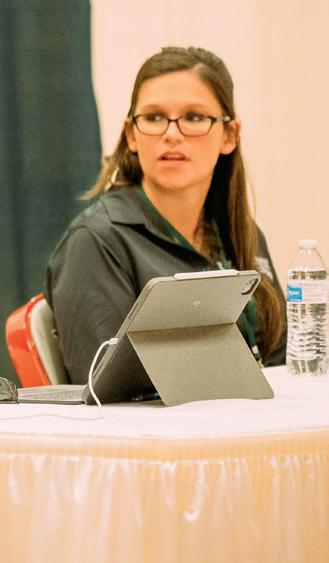
Brandi cites one of her favorite parts of the job is being part of the co-op's small, local employee team and the camaraderie shared with co-workers. She notes that the work differs day-to-day as different members stop by or call our offices with unique needs or situations.
To help you get to know more about the employees who work to keep your lights on, we asked Brandi a few questions:

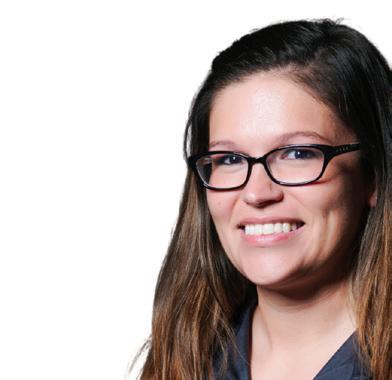
What is your favorite candy bar?
A "Whatchamacallit" bar.
What is your favorite quote? "Be yourself; everyone else is already taken."
What do you enjoy most about your role at the cooperative?
Being able to help members. I like to feel like I am improving someone's day.
As a child, what did you want to be when you grew up?
A nurse, because I've always wanted to help people.
You recently participated in a line crew observation. What stood out from the experience?
ere is a lot more to the work than you would think. It takes a lot of knowledge, training, and equipment to get the job done. Our crews are highly coordinated and have to solve problems in real-time.
What is your favorite memory from working at Mid-Ohio Energy?
I really had a great time at our electric vehicle member event awhile back. The whole event was family-friendly, so seeing our members with their children or grandchildren was really cool.
The following members have unclaimed capital credits that were retired in 2019. These amounts represent members’ share of margins that were generated by Mid-Ohio Energy Cooperative during the years these people were living in the cooperative’s service areas and purchasing electricity from Mid-Ohio Energy Cooperative (or formerly United Rural Electric or Marion Rural Electric). Attempts to reach these people by mail were returned because of incorrect or insu cient addresses. These names appeared in Ohio Cooperative Living magazine in 2019 and several times since. As required by Mid-Ohio Energy’s Code of Regulations, four years following the mailing of retired patronage and 60 days after two consecutive notices in Ohio Cooperative Living magazine, the unclaimed funds revert to the cooperative to be reallocated to active patrons. This is the first notice.
ABRAMS ANGELA K
ABRAMS MATTHEW
ACKERMAN JOSEPH
ACKERMAN MATHEW O
ACKERMAN STEVE
ADA AIRPORT
ADAM JUDY
ADAMS BRUCE
ADAMS DIANA
ADAMS DONALD R
ADAMS DOUGLAS S
ADAMS GERTRUDE E
ADAMS JAMES W
ADAMS JOHN C
ADAMS LARRY
ADAMS SUSAN
ADDIS LYNN
AETNA INSURANCE
AGER LISA M
AGNER LAURA
AGRIESTI ANTHONY J
ALBANESE CHRISTIAN
ALBANESE JOSEPH J
ALBERT ANDREW
ALBERT HAROLD
ALBERT TODD
ALBINACK JOE
ALBRIGHT DAVID G
ALDRIDGE LARRY W
ALDRIDGE MICHAEL A
ALDRIDGE SANDRA I
ALEXANDER CHRISTINA M
ALEXANDER IVORY DOLL
ALEXANDER JEFF
ALEXANDER MICHELLE
ALEXANDER PAMELA
ALLARD SHARON
ALLEN ETHAN H
ALLEN JERRY
ALLEN KELLY A
ALLEN LOUISA A
ALLEN MARJORIE
ALLEN RICHARD O
ALLEN WILLIAM J
ALLER ERIN M
ALSPACH SHANNON
ALT GERALD R
ALTHOUSE JULIE M
ALTVATER AMY
AMERICN
TELPHONE&TELGRAPH
AMES JIM A
AMMONS ELOISE
AMSTUTZ BUTCH
AMSTUTZ DELORES
AMWEG JUANITA
ANDERSON CLARENCE L
ANDERSON JEFFREY S
ANDERSON PAULA L
ANDERSON SHERRY
ANDREWS TREG
ANGLES CHRISTIE
ANSPACH DANIEL L
APPLEFELLER JOSEPH
APPLEGATE GERALD J
ARBOGAST SCOTTY
ARMSTRONG RODNEY
ARNETT BETTY
ARNETT CHARLES R
ARNOLD ARTHUR
ARNOLD DOUGLAS D
ARNOLD T M
ARNOLD WILLIAM
ARREOLA JUAN
ARREOLA SANCHEZ
MARIVEL
ARTHUR DEBORAH K
ASHBA VERNA A
ASHLAND EXPLRATN INC




AUL DEBORAH A
AULT CAROLYN
AULT GARY
AUSTIN CLARENCE
AUTEN DAVID K III
AYALA DEASY
B & B FARMS
BACKUS ELIZABETH A
BADEN JEANNE
BADER SARA L
BAILEY ANN
BAILEY DEAN
BAILEY JENNFIER
BAILEY KRISTEN
BAILEY MISTEE
BAISDEN RALPH H
BAKER BECKY
BAKER BRUCE H
BAKER JONATHAN
BAKER KENNETH E
BAKER MISTY
BAKER TRINA
BALDAUF DALE
BALDRIDGE MICHAEL
BALDWIN DAVID E
BALDWIN GARY
BALDWIN MICHAEL J
BALDWIN SARA
BALE PAUL W
BALLARD JANE
BALLARD TEDDY H
BALLENGER JUDY
BALLINGER LORI
BANK OF AMERICA
BANK ONE
BANKS DAVID L
BANKS WILLIAM
BARKER HELEN R
BARNETT LEONARD D
BARNETT NOAH
BARNHART MICHELLE
BARRY DAWN
BARRY KEVEN
BARTON WANDA L
BARTZ HOWARD H
BASEL FARMS
BASH JEFFREY J
BATEMAN SONDRA J
BATES DAVID D
BAUTISTA MARIA
BAYLES JAMIE
BAZZY OMAR J
BEACHUM CARDELL
BEARD MARY E
BEARDSLEY JIM
BECHTOL TERRENCE
BECKLEY CAROL
BEEDY ROGER
BEERS BRUCE
BEGG DENNIS
BELARDO ANGELITO
BELDEN ZACH
BELL JEFFREY P
BELL MATTHEW E
BELL PHILIP A
BELLAMY BEN W
BELLVILLE KIM J
BELSHE CONNIE
BELT CHAD
BELTZ ROBERT C
BELTZ STACIE
BEMILLER JOSEPH
BENJAMIN GARY H
BENNER GARY G
BENNETT & SIEG AUTO
BENNETT DANA
BENSON CHRISTIE
BENSON DENNIS R
BENTLEY DOUGLAS E
BERCAW GEORGE L
BERG TIM
BERRY JAMES
BERRY KEVIN
BERVAS MIKAEL
BIBLE WESLEYAN
METHODIST CHU
BIGELOW KIMBERLY K
BIGGERSTAFF H W
BILGER CATHY
BILL LINA M
BILLINGS DENNIS
BILLINGS DOUG E
BILLOCK DENNIS
BILTZ ROBERT
BINGHAM BOBBY
BINKLEY CAREY
BISH DOROTHY
BISH DOUGLAS S
BISHOP HARRY L
BISHOP RICHARD A
BISHOP THOMAS E
BLACK DEVIN
BLACK ROBERT E
BLACK WILLIAM
BLACKLEDGE BRIAN
BLAIR DUSTIN
BLAKE DALE H
BLANKENSHIP WAYNE
BLANTON APRIL K
BLEVINS VENARD
BLEVINS WILLIAM
BLUE JONI
BLUM DONALD E
BLUMENSCHEIN SHERRY P
BOGART PHILLIP
BOGGS JOSH
BOGGS JOYCE E
BOGGS KEN L
BOGGS LEROY
BOGGS WARREN L
BOLANDER LARRY
BOLDUC MATT
BOLLINGER DONNA S
BOLTZ TONYA
BOND ROBYN L
BONSEL ASHLEY
BONSEL STACY
BOOKAMER WESLEY H
BORDEN GARY
BORGER EDNA M
BORN KENDRA
BORROR JAMES D
BOSART NICOLE
BOSSERMAN RICHARD K
BOTCHLETT JAMES
BOTCHLETT RHONDA
BOURQUE J B
BOUTWELL M J JR
BOWER DENNIS
BOWLBY ALLAN
BOWLING DON
BOWLING DOUGLAS W
BOWLING JACK A
BOWMAN & RICHARDS
PROPERTY
BOWMAN PHYLISS
BOYD DANNY L
BOYD EUGENE
BOYD JILL N
BOYD JOHN A
BOYD RICHARD O
BOYER ROBERT L
BRADFORD TORRI
BRADISH LINDA
BRADLEY CHARLES N
BRADLEY JONATHON
BRADLEY PATRICK O
BRADY CARL
BRANHAM DAVID L
BRAY DONALD
BREECE BRADLEY R
BRENEK JUDY
BRENNEMAN KIRK
BRENZO STEVEN
BREWER LAURA
BREWER MARTHA L
BREWER NANCY J
BREWSTER AMY S
BRICKER B M
BRICKNER ROGER J
BRIDENSTINE CAROL
BRIDGES FLOYD A
BRIGGS WANDA
BROADWATER DAVID A
BROCKMAN PAT
BROOKS KIMBERLY K
BROOKS MARGARET A
BROOKS TED
BROWN BRIAN
BROWN CLARENCE
BROWN DAVID A
BROWN DEBORAH S
BROWN DIANE
BROWN DONALD S
BROWN EDNA P
BROWN HEIDI E
BROWN JAY
BROWN JOHN V
BROWN JOSH A
BROWN LEONARD JR
BROWN LINA
BROWN LORETTA
BROWN MARIANNE
BROWN MARILYN D
BROWN MICHAEL J
BROWN MILLIE TRUST
BROWN RANDY
BROWN RICHARD
ARTHUR
BROWN ROBERT J
BROWN RONALD O
BROWN TRINA S
BROWN VIRGINIA
BRUNER R C
BRYAN BLAKE
BRYANT FLOYD
BRYANT RUSSELL
BUCKLAND D JR
BUCKLEY JOE
BUENTELLO ABRAHAM
BUHLER BRYAN
BUNNELL WILLIAM G
BUNTING CALVIN
BURBA ALLEN
BURDICK REBEKAH S
BURGAN JAMES M
BURGESS ROY E
BURKS JODI
BURLEY MARIE M
BURNETT KIMBERLY L
BURNS ANGIE
BURNS CINDY
BURNS NICHOLAS
BURNSIDE CHARLES
BURRIS CLIFFORD
BURTON ANGELA
BUTLER TRACY
BUTTERMAN CYNTHIA K
BUYER JERRY L
BYER GILBERT
BYERS NICOLE
BYLER JACOB D
BYRNE CHARLES
CALDERA GONZALO
CALDWEL MIKE
CALDWELL CATHY J
CALDWELL JAMES C
CALDWELL JOSEPH L
CALDWELL JULIA
CALDWELL MARK
CALDWELL STEVE
CALDWELL TIFFANY M
CALDWELL WILLIE
CALLENTINE DANNY E
CAMBURN ROBERT M
CAMPBELL JACQUELIN A
CAMPBELL JANET L
CAMPBELL JENNY
CAMPBELL MICHAEL T
CAMPBELL ROBERT
CAMPBELL THURMAN
CANDEL GREG
CANNODE GEORGE
CANNON WELLES
CANTER GARY
CANTER JAMES D
CANTERBURY JUSTIN
CANTRELL HERB
CAPLIN GARY L
CARDER DEBI
CAREY CHAD M
CAREY DANIEL R
CARLSON LARRY W
CARNAHAN MARL J
CARNAHAN STEVEN
CARNEY TAMARA
CARPENTER ANGELA
CARR AMBER
CARR DANIEL R
CARR DOUG
CARROLL DONNA K
CARRUTHERS CHRIS
CARTER ROBERT E
CARTY DARRELL R
CASE VIVIAN
CASPERSON APRIL
CASPERSON MIKE
CASSIDY TIMOTHY
CASTLE CARL
CASTLE DONALD
CASTLE ELIZABETH
CASTLE JAMIE G
CASTLE LISA
CASTLE LORETTA
CASTLE TERRI
CASTLE WENDY L
CASTO CHARLES F
CAUDILL BETH S
CAVE MELISSA
CAVINEE KATHLEEN M
CAVINEE NANCY
CAVINEE SCOTT W
CENLAR FSB
CHAFFIN STEVE
CHAKEY KAREN M
CHAMBERLIN KAYLA
CHAMBERLIN MARY
CHAMP JAMES W
CHAMPER DOUGLAS
CHANEY LONNIE
CHAPMAN DORIS
CHAPMAN KRYSTAL
CHAPMAN PAM
CHARLOTTE FARMS INC
TOLLE ROBIN
TOLLEY ROY L
TONEY PAMELA
TRACEY ELIZABETH
TRACY MALON A
TRAUSCH MICHELE M
TREMBLE CONSTANCE D
TRENDEX INC
TRENT CARLA L
TRENT DAVID R
TRINKO LYNN A
TROUT JOHN
TROXELL C LAWRENCE II
TRUESDALE CASEY L
TSCHUOR JAMES B
TURK THOMAS
TURNER HELEN
TURNER KENNETH E
TURNER MANDY
TURNER TRUMAN D
TYRA DAVID
TYREE JEFF
ULRICH DAVID
ULRICH DONALD F UNDERWOOD DWIGHT R
UNITED RUBBER LOCAL #241
UTLEY RICKIE L
VACON M L
VAIL MACK B
VALDEZ DANITA
VALENTINE AL
VALENTINE LINDA
VALLADARES JAVIER
VAN ATTA JAMES
VAN HORNE GEVIN D
VANBUSKIRK GRETCHEN
VANDERHOOF MARK D
VANDYKE GERALD
VANFOSSEN LAURA
VANHOOSE KENNETH
VANIMAN R S
VANSCODER PATRICIA
VANVLERAH LINDA S
VANVLIET STEVEN C
VANWILPE JAMES
VARNER BONNIE R
VASQUEZ REYNALDO A
VAUGHN ANNETTE
VAUGHN VIRGINIA L
VERMILLION KIM
VEST LIA K
VIARS CHARLES
VOLBERT R A
VONKAENEL MICHELLE L
WADDELL DONALD L
WADDELL TRACY
WADDLE DELORES J
WADDLE JACK
WAKELY KEVIN D
WALDEN KATHY
WALKER ALBERT
WALKER JAN E
WALKINS DAVID
WALLACE JOHN R
WALLACE PATRICIA
WALLER JULIE A
WALTER TAMMY S
WALTON HERBERT
WALTZ MAY
WAMPACH JEFF
WARD DARLENE K
WARD JAMES R
WARD JANET M
WARD MARY F
WARD
VANESSA
WARREN OTHA LEON
WARREN SEWELL C
WARWICK LINDA
WASSERBECK DAN
WATKINS BRIAN H
WATKINS GLENN W
WATSON MICHAEL
WATTERS JENNIFER
WATTS STEPHANIE
WAUGH WILLIAM F
WAYLAND TERRY C
WEAVER ELIZABETH
WEAVER WILLIAM R
WEBB CARL L
WEBB LINDA
WEBB ROBERT L
WEBB RONALD B
WEBB TRISHA
WEBER HELEN
WEBER RONALD J
WEDDINGTON STEVE
WEIDNER DUSTIN
WEISER TIMOTHY M
WELCH ZACHARY
WELKER BILLY A
WELLBAUM JAMES
WELLS DENNIS
WELLS DONNA
WELLS EDDIE
WELLS GARY
WELLS JAMES L
WELLS MARTIN E
WENDELL DAN
WERLING MELISSA SUE
WEST JOSEPH W
WEST MARK E
WEST NEWTON ME
CHURCH
WESTLER JOHN M
WETHERILL MATTHEW
WHALEY THELMA M
WHALEY WESLEY L II
WHETSAL BRUCE
WHIPPLE NANCY
WHISLER HOWARD E
WHITAKER CLARENCE
WHITAKER TINA M
WHITCUM GARY
WHITE ANDREA PFC
WHITE BEVERLY
WHITE CHRISTINE
WHITE DIANA K
WHITE ELAINE C
WHITE FRANK
WHITE JAMES D
WHITE JENNIFER
WHITE JOSEPH C
WHITE KELLI
WHITE LISA R
WHITE PAUL J
WHITE RICHARD A
WHITE RONALD C
WHITE STEVEN H
WHITEHEAD GLADYS
WHITESELL DAVID
WHITLEY SANDRA
WHITT ELLA N
WICKER WILL
WICKHAM RYAN
WIELINSKI KLAUS
WILAND JOSEPH S
WILCH WALLACE JR
WILCHECK MARK
WILEY TODD J
WILKINSON ROBERT
WILLIAMS BRANDON
WILLIAMS BRENT
WILLIAMS CHASTITY
WILLIAMS DIANA S
WILLIAMS DONALD E
WILLIAMS ERIN M
WILLIAMS FERN
WILLIAMS JACKIE
WILLIAMS JASON D
WILLIAMS JOHN III
WILLIAMS MELISSA
WILLIAMS MIKE
WILLIAMS PERRY
WILLIAMS RICHARD W
WILLIAMS RONALD P
WILLIAMS TRACY
WILLIAMS WAYNE
WILLIAMSON JAYME
WILLIAMSON R BARRY
WILLMETH PAULINE
WILLS ROY E
WILSON BETH
WILSON BRIAN
WILSON BRIAN M
WILSON BYRON B
WILSON DAVID A
WILSON JANE
WILSON JUDY
WILSON KRIS A
WILSON LORENZA
WILSON PATRICK
WILSON ROBERT E
WILSON ROBERT E JR
WILSON SHERI
WILSON TERESA L
WILSON TOM
WILT MICHAEL W
WINDSOR DARYL
WINEBRENNER CHARLES A
WINEGARDNER SANDRA
WINKLER GREG
WIREMAN DON
WIREMAN HEATHER
WIREMAN LEE
WIREMAN MARIE T
WISCHMEYERS DANIEL L
WISE JUNE A
WITHROW JENNIFER M
WODARSKI GARY
WODARSKI LANORA
WOLF LEMUEL J
WOLF MARY J
WOLFE CHRISTINA
WOLFE TERRY
WOLFORD RICK
WOLFORD RONALD M
WOOD JENNIFER D
WOOD JIM
WOOD THOMAS R
WOOD WARREN R
WOODLAWN ENTERPRISES
WOODRUFF PAUL
WOODRUFF RAY
WOODRUM KYLE L
WOODS WENDEL W
WOOLUM JACKIE L
WORDEN CHAD
WORDEN DONALD
WORKMAN PHYLLIS
WORKMAN RICHARD
WOROBIEC MICHELE
WORRELL DENA
WOTEN WENDY
WRENCHEY JOE JR
WRIGHT CHRISTINE
WRIGHT CRISTA
WRIGHT JASON
WRIGHT NICKY
WRIGHT SHERMAN
WRIGHT TASHA
WRIGHTSEL EARL W
WRIGHTSMAN KAREN
WRIGHTSMAN
Did you know ceiling fans can make a room feel 4 degrees cooler? To save energy through ceiling fan use, remember to raise your thermostat a few degrees while fans are turned on. Ceiling fans can help improve comfort year-round. In the summer, operate ceiling fans in a counterclockwise direction. Reverse the direction to clockwise during winter months and set fans on a low speed so warm air can circulate from the ceiling to the lower levels of the room.
Remember, ceiling fans cool people, not spaces. Be sure to turn them off when you leave the room.
Source: Department of Energy
• Our offices will be closed Thursday, August 10 , for an all-employee training day
• For payments and assistance, call 888-363-6446. Drop boxes are available for payments at each office location.
• Emergency service is available 24/7.
Concern for community is a co-op principle that drives our efforts to improve the quality of life for members and the areas where they live, work, and play.
In 2006, the Mid-Ohio Energy Community Fund was established to help support our communities by providing funds for community service projects, medical care and equipment, food, clothing, housing and other needed services.


Funds are generated by members who permit their electric bill to be rounded up to the next highest dollar each month. There's no administrative fee and all funds go to local individuals in need or non-profit organizations. Applications are reviewed and awarded quarterly by the Community Fund board, consisting of nine members, each representing one of the co-op's trustee districts.
Community Fund grants have helped schools, fire departments, youth sports groups, homeless shelters, food pantries, parks, literacy efforts, and more!
The Community Fund board will hold its next meeting to review fall quarter requests on Sept. 21. Grant requests must be received at least 10 days prior to the meeting to be considered. Applications and guidelines can be found online at MidOhioEnergy.com/CommunityFund


Last year, a grant to the Ridgemont Activities Boosters helped Ridgemont schools renovate and refresh weight room equipment used by students. This is just one of many examples of the Community Fund boosting local efforts.

In June, the Community Fund board met to award $11,300 in grants to support the organizations and e orts listed below. These are just a few examples of how Community Fund dollars are helping locally:
• Mt. Victory - Community Improvement Corporation — Support for beautification efforts that includes new signage, landscaping, painting, and more in Mt. Victory.
• Marion Area Chamber Foundation — Funds to help with the Marion Area Chamber of Commerce's Youth Leadership Program, which seeks to develop the next generation of leaders in Marion County.

• Some of Us People (SOUP) — Support to help the Kenton organization serve hot meals to those in need.
• Friends of Caledonia — A grant to provide free fun entertainment and activities for youth in the community.
• Leapin' Outreach Center — Assistance with plumbing costs to provide bathrooms & showers for the homeless.
• And more! Know a not-for-profit organization doing good in the community? Encourage them to apply!
Now you can finally have all of the soothing benefits of a relaxing warm bath, or enjoy a convenient refreshing shower while seated or standing with Safe Step Walk-In Tub’s FREE Shower Package!
✓ First walk-in tub available with a customizable shower
✓ Fixed rainfall shower head is adjustable for your height and pivots to offer a seated shower option




✓ High-quality tub complete with a comprehensive lifetime warranty on the entire tub
✓ Top-of-the-line installation and service, all included at one low, affordable price





















Now you can have the best of both worlds–there isn’t a better, more aff ordable walk-in tub!

A family and community slowly recover after a tragic accident on a Mercer County farm.


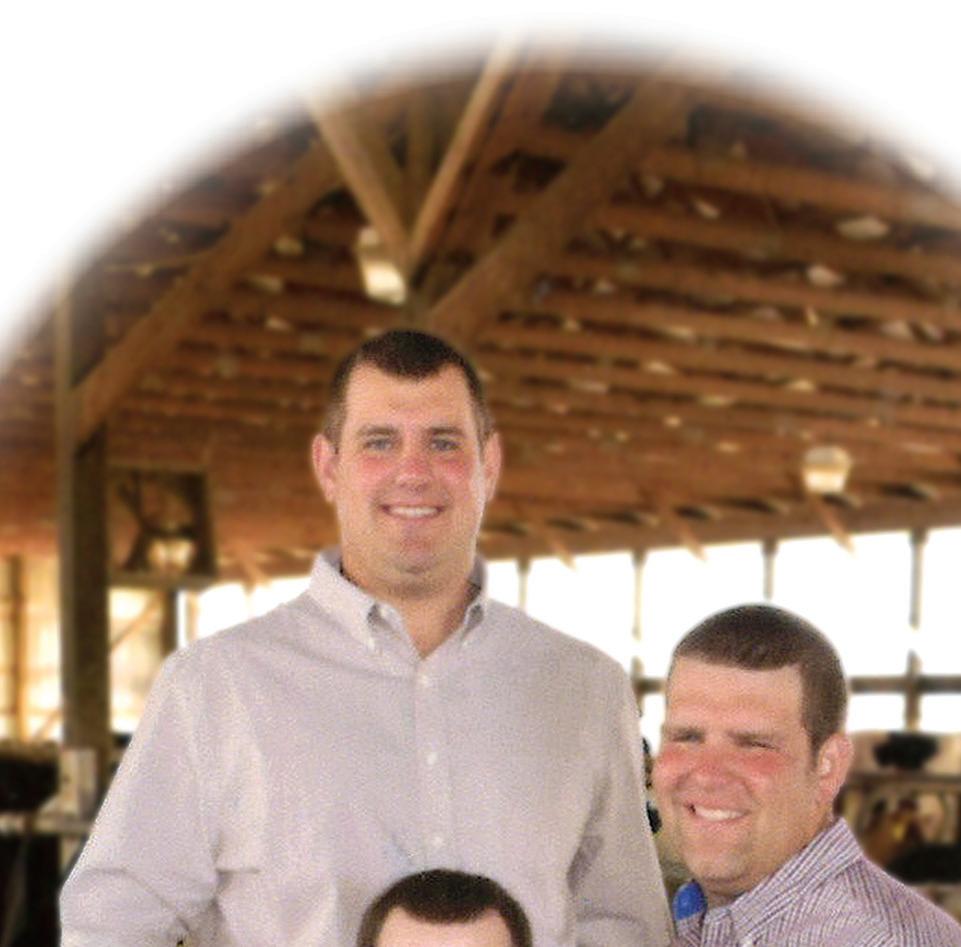 BY MARGIE WUEBKER
BY MARGIE WUEBKER
The sounds of high-pitched laughter and delighted squeals fill the air on this late-spring Saturday afternoon at Carthagena Park in rural Mercer County as youngsters scramble over brightly colored playground equipment.
Those happy sounds, from children who are mostly unaware of the story behind the beautifully and caringly renovated park, help console the entire community, and specifically the family of the three brothers in whose memory the equipment was dedicated.

Gary, Brad, and Todd
Wuebker were often described by relatives and friends as the perfect trifecta — brothers who worked hard, played hard, and lived life to the fullest. They also were brothers who lived and died doing what they loved: working together on the family farm.


Not far from the park, the boys’ mother, Nancy Wuebker, sits in her kitchen at GBT Family Farm, in the heart of Midwest Electric co-op territory. She recalls the events of Aug. 10, 2021, that forever changed the lives of her family and the close-knit farm community they call home.
“It was so unusual to have all three boys home for lunch, so we celebrated with pizza,” she says. “I remember them here around the table, eating, talking, and laughing. They seemed to have all the time in the world before heading outside to tackle farm chores that never seem to end.”
The otherwise quiet afternoon was shattered when 35-year-old Brad rushed back to the house yelling for his mom to get help. His older brother, Gary, 37, and younger brother, Todd, 31, had gone into the manure pit to repair a pump and they were no longer responding. She grabbed the cell phone, dialed 911, and ran outside, only to discover that Brad had entered the pit to help his brothers.
Sirens from three ambulances and assorted fire trucks filled the air. Grim-faced first responders converged on the scene along Coldwater Creek Road, hoping for the best yet fearing the worst. They knew from their training that manure pits can generate toxic gases that, depending on concentration levels, can cause a range of complications from inflamed eyes or difficulty breathing to collapse and death.

The brothers, all unconscious, were rushed to Mercer County Community Hospital in Coldwater, where medical personnel were unable to save Gary or Todd. Brad, who hadn’t been in the pit quite as long, was taken by helicopter to a hospital in Fort Wayne, Indiana, but succumbed several hours later.
Their father, John Wuebker, had been en route to a Dairy Farmers of America board meeting in Medina when he got a notification on his phone about an accident at the farm, which he operated along with his sons. He immediately turned around and headed back to Mercer County. He discovered the overwhelming loss upon his arrival at the hospital. “We came home to an empty house,” he says quietly. “We had been blessed with three sons and now they were all gone.”
Early the next morning, after a long, sleepless night, John headed out to the barn; work, of course, never stops on the farm. He found family, friends, and neighbors had already arrived to help.
“This was a terrible tragedy,” Nancy says. “But you cannot believe the outpouring of love and support that we have received and continue to receive.”

Messages of sympathy and support came from near and far, from longtime friends and complete strangers. Soon after, friends organized a fundraiser.
Donations poured in, and a decision was made to purchase agriculture-themed playground equipment for the community park, where the brothers used to play baseball for the Carthagena Cardinals. Three shade trees and three comfortable benches, all marked with commemorative plaques, completed the renovations.
“We came home to an empty house,” he says quietly. “We had been blessed with three sons and now they were all gone.”
“Our park runs on a shoestring budget,” says Alan Kremer, president of the park board. “We could never afford something like this. It is truly a gift from heaven.”













Dedication ceremonies took place last year on the first anniversary of the tragedy, and nearly 1,000 people came out for the observance — which included barbecued chicken dinners, music, and cornhole games. Mark Hoying, a local priest and a family friend, blessed the park, including the new playground equipment, using a small tree branch to disperse holy water.
Attendees shared poignant memories and comforting hugs. There were plenty of tears for the brothers, but lots of smiles, too.










In the months since the 2022 dedication, a large cow-shaped plaque with a photo of the brothers has been mounted on the side of the enclosed picnic shelter (shown at left). The plaque is also inscribed with their eulogy, written by cousins Diana Kramer and Kevin Wuebker, describing the men in loving detail to keep their memories alive in perpetuity.
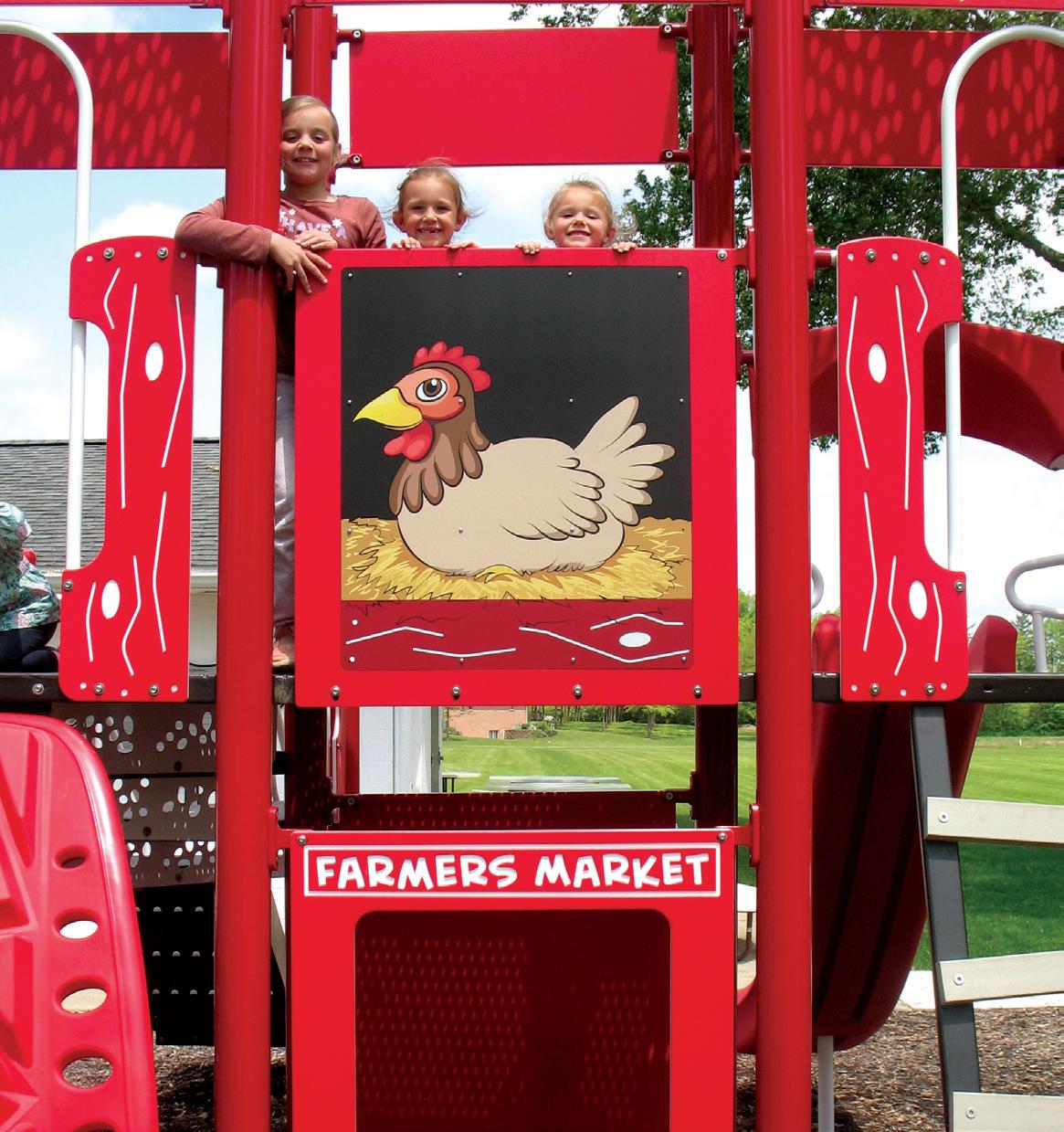

Gary, the oldest, lived at the farm and also worked parttime at Mercer Landmark, the local farm co-op, where he was known as Mr. Fix-It and was often called upon when something broke or needed revamping. Gary loved working with the cattle and never complained when he had to get up at night to check on the herd or deliver a calf. He sometimes bottle-fed a new arrival to make sure it got a good start in life.
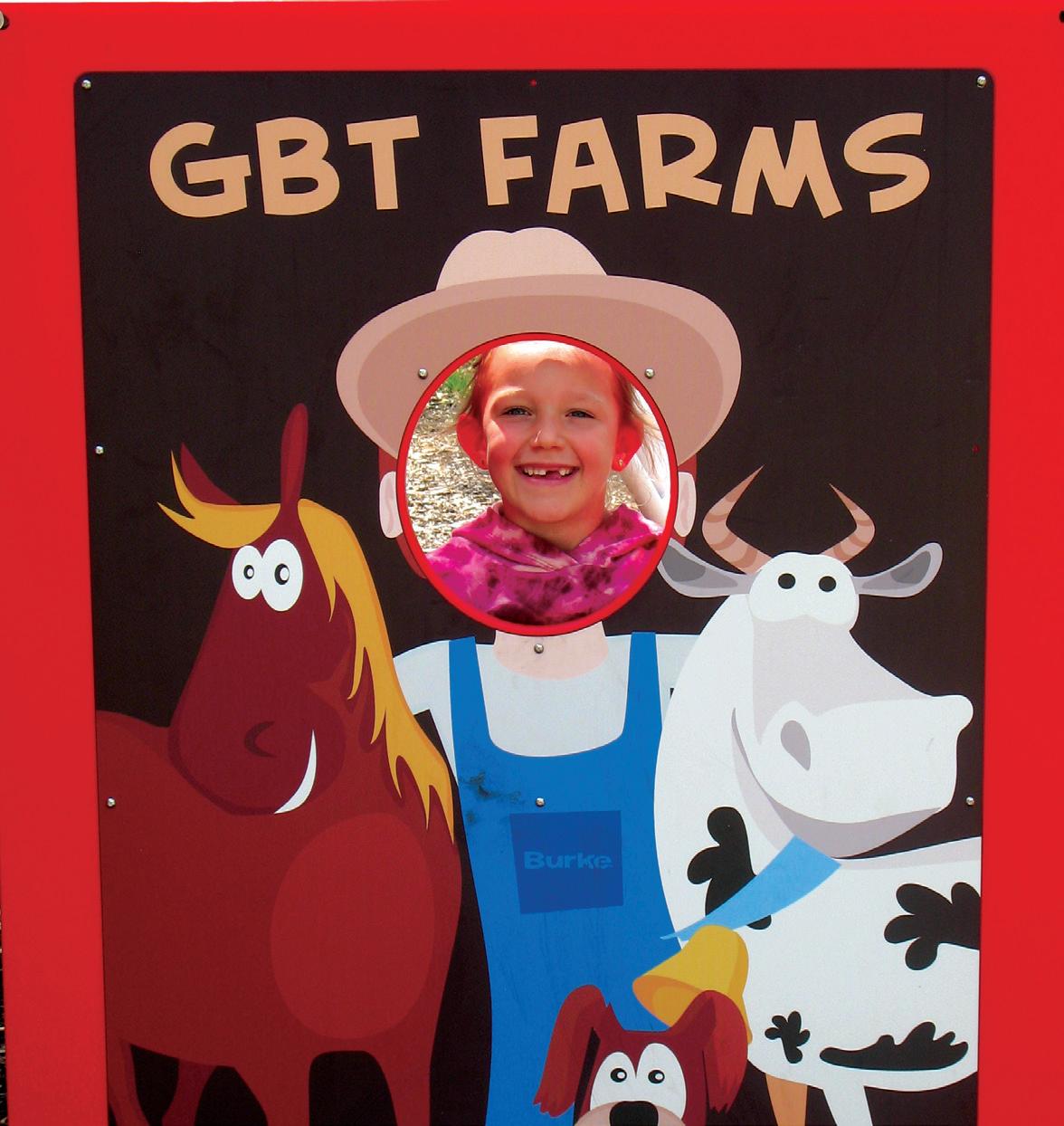
Brad, the middle brother, was so proud of the house he had recently purchased near the farm. He also worked at Mercer Landmark, where he took special interest in keeping the tractors clean and in tip-top shape — particularly the trusty Ford New Holland 8770. Brad enjoyed spraying weeds and working with the hogs, and always made sure everything was in its rightful place.
Todd, the youngest, worked at Rindler Truss. He was the construction guy who built whatever was needed on the farm — a fixer, like Gary. He also had a passion for the dairy herd, and had a knack for managing the computerized robotic milking system. Most of all, though, Todd enjoyed being a dad. He and his wife, Angela, already had two children — Ava and Levi — and were eagerly
awaiting the birth of their third child. Their daughter Everly arrived just weeks after the accident.

Although neither Gary nor Brad was married, it was not unusual for the pair to argue good-naturedly about which one was the best uncle. Family members proclaim it was a tie.

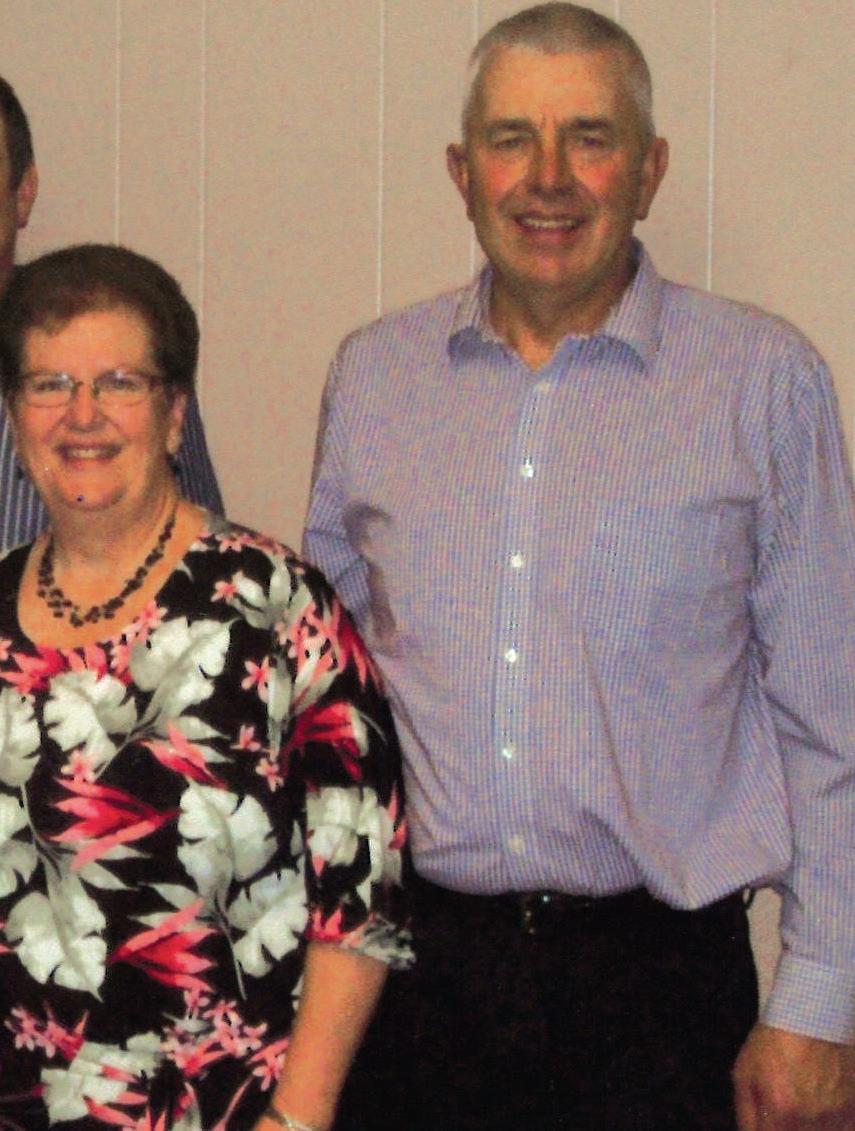
“From the time they were little, our boys only wanted to be farmers like their grandpa, dad, uncles, and cousins,” Nancy says. “Farming was definitely in their blood. We preached safety; they grew up knowing the dangers as well as the rewards.”
She recalls the boys helping in the garden as youngsters, and how they quickly escaped to the barn as soon as the last weed was pulled and the last row was hoed. They never turned down a chance to drive the tractor, and always worked as a team when it came to planting, harvesting, and baling hay. No one complained about the long hours or the
seemingly endless array of chores.



Although dairy and field work remains virtually unchanged, the family decided to sell the hogs as a means of reducing the workload, and nephews now help with day-to-day chores around the farm; nevertheless, retirement is not nearly as close as John once envisioned. Tears still come from time to time, but the Wuebkers say family, friends, and faith sustain them in their loss, and they often cite John 15:13 — “Greater love has no one than this: to lay down one's life for one's brother.”
“I sometimes wonder why they all ended up in the pit that day,” Nancy says. “They went to help each other, like always. Deep in my heart, I know one could not have gone on without the others. They did everything together in life and now they are together in eternity.”
Editor’s note: Though she shares their surname, author Margie Wuebker is not related to the subjects of this story.































 The Wuebker family (from left): Gary, Brad, Angela (holding Levi with Ava in front), Todd, Nancy, and John.
The Wuebker family (from left): Gary, Brad, Angela (holding Levi with Ava in front), Todd, Nancy, and John.
“Deep in my heart, I know one could not have gone on without the others. They did everything together in life and now they are together in eternity.”
Throughout the ages, there have been many important advances in mobility. Canes, walkers, rollators, and scooters were created to help people with mobility issues get around and retain their independence. Lately, however, there haven’t been any new improvements to these existing products or developments in this field. Until now. Recently, an innovative design engineer who’s developed one of the world’s most popular products created a completely new breakthrough . . . a personal electric vehicle. It’s called the Zinger, and there is nothing out there quite like it.

“What my wife especially loves is it gives her back feelings of safety and independence which has given a real boost to her confidence and happiness! Thank You!”

The first thing you’ll notice about the Zinger is its unique look. It doesn’t look like a scooter. Its sleek, lightweight yet durable frame is made with aircraft grade aluminum so it weighs only 47.2 lbs. It features one-touch folding and unfolding – when folded it can be wheeled around like a suitcase and fits easily into a backseat or trunk. Then, there are the steering levers. They enable the Zinger to move forward, backward, turn on a dime and even pull


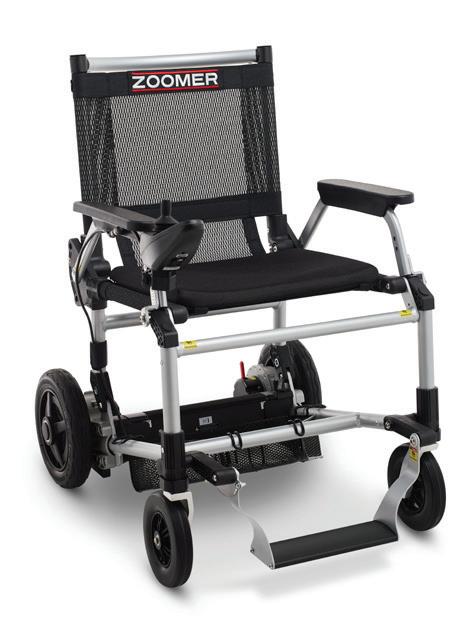
right up to a table or desk. With its compact yet powerful motor it can go up to 6 miles an hour and its rechargeable battery can go up to 8 miles on a single charge. With its low center of gravity and inflatable tires it can handle rugged terrain and is virtually tip-proof. Think about it, you can take your Zinger almost anywhere, so you don’t have to let mobility issues rule your life.
Why take our word for it? Call now, and find out how you can get a Zinger of your very own.
Call now and receive a utility basket absolutely FREE with your order.

1-888-802-0207
Please mention code 120072 when ordering.

Once in a lifetime, a product comes along that truly moves people. Introducing the future of battery-powered personal transportation . . . The Zinger.







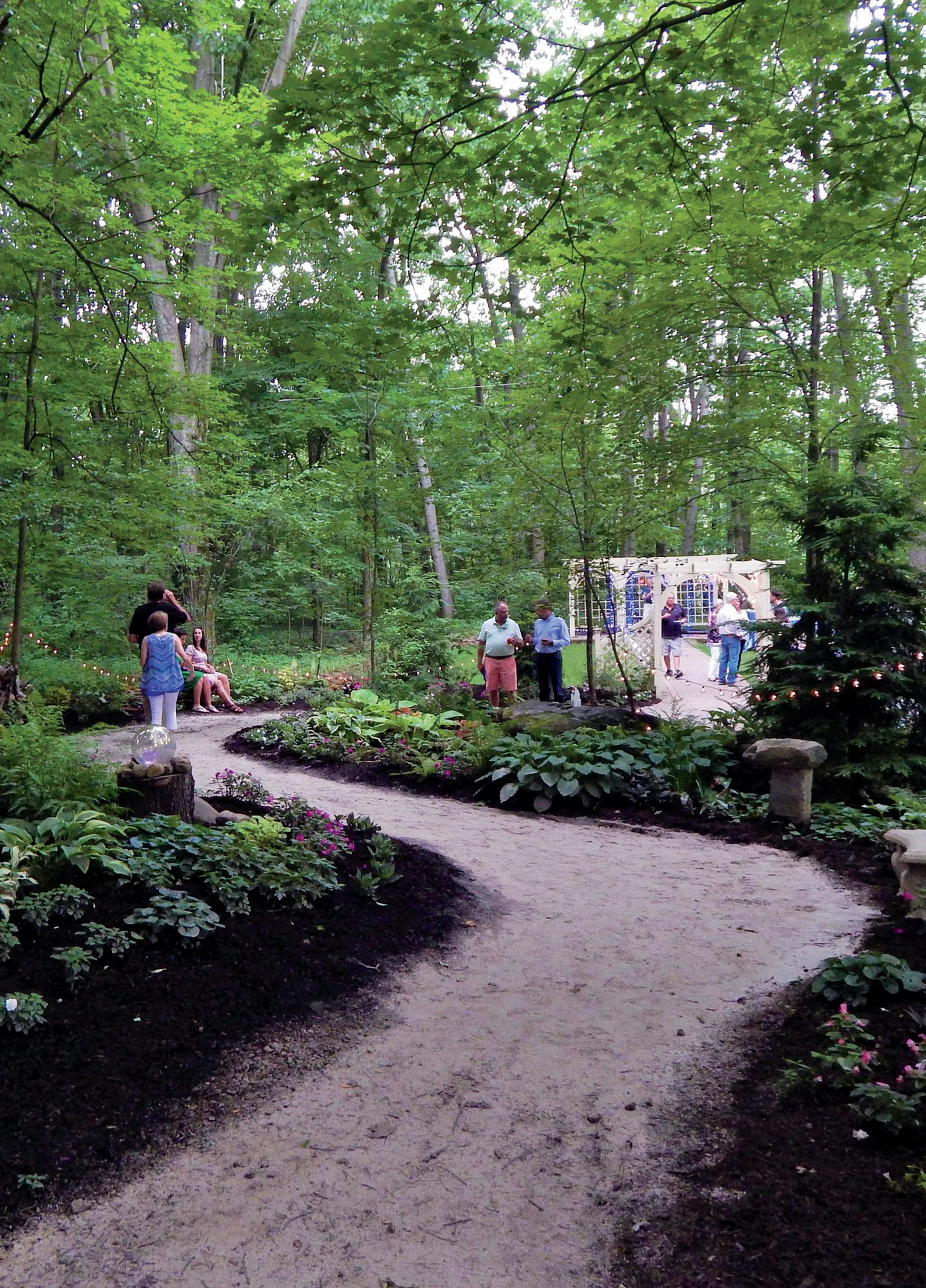 BY VICTORIA ELLWOOD
BY VICTORIA ELLWOOD
Tucked in a scenic area just west of Alliance, Beech Creek Botanical Gardens and Nature Preserve is an enchanting space to discover nature, offering a breath of fresh air for people of all ages.








“We often talk about Beech Creek as a nature exploration paradise,” says Eric Ginanni, marketing director. “What we have created is more than a botanical garden with plants and flowers; it’s also a nature preserve with trails and animals, a butterfly house, a playground made of natural materials, and more. It’s a place where kids and families and individuals can come and get lost in exploring nature.”
The 181-acre nonprofit Beech Creek started 24 years ago with a grassroots effort to bring the community together to interact with nature. “We are always finding new ways to foster creativity in people — especially children — by giving them areas to explore and discover,” Ginanni says. “We’re
huge on education, making our spaces an opportunity to learn something new or just uncover fun tidbits about our natural world.”
Beech Creek’s multiple gardens, trails, exhibits, and events — from life-size Lincoln Logs and treehouses in the playground to a caterpillar nursery and annual butterfly parade — are enjoyed yearly by more than 40,000 visitors. Turn the page to discover a few of our favorite spaces.
Beech Creek Botanical Gardens and Nature Preserve, 11929 Beech St. NE, Alliance, OH 44601. Open year-round for a general admission fee. Memberships are available. www.beechcreekgardens.org.
The Amazing Garden Plant and Animal Science Center is “the mainstay of all our gardens. It has a little bit of everything: plant life, critters like turtles and snakes and lizards, and lots of educational activities,” Ginanni says. The 2,000-square-foot conservatory uses hands-on learning stations to integrate nature with literature, math, music, art, and science.

The family-friendly Butterfly House is a hands-on indoor space where visitors can interact with — and even feed — native butterflies. A caterpillar nursery lets visitors observe their life cycle. And outdoor gardens are filled with native plants and flowers that attract wild butterflies. Each summer, native butterflies are released back into the wild during a popular celebration that includes a parade and a butterfly release.

The newly opened Woven Outdoor Art Museum is made entirely of natural materials woven together. It’s designed for visitors to walk through, explore, and see both into and out from with a view of the surrounding landscape.


“My favorite spot here is definitely Nature Playce,” Ginanni says of the 2-acre natural playground that includes life-size Lincoln Logs, treehouses, a giant bird’s nest, a mud kitchen, a mini zip line, a music area, a sprinkle pond, and more. “I not only enjoy being a kid again,” he says, “but it’s fun to see our guests use their imaginations, get creative, and have so much fun running around and exploring nature. I can’t imagine Beech Creek without Nature Playce.”
 Don’t miss the four hiking trails that meander through Beech Creek preserve: Fern Ridge Trail, Spicebush Trail, Oakview Trail, and Creekside Trail.
Don’t miss the four hiking trails that meander through Beech Creek preserve: Fern Ridge Trail, Spicebush Trail, Oakview Trail, and Creekside Trail.
France began its effort to colonize North America not too long after Christopher Columbus arrived here in 1492. At times between 1656 and 1750, in fact, France controlled more of the continental land mass than Britain and Spain combined.
France’s dream of controlling the continent ended with Britain’s victory in the French and Indian War, and the vast majority of North American places and people have since conformed to English traditions. But there are plenty of pockets that continue to cling to French customs.
Quebec, for instance, continues to be a Francophone island in English-speaking Canada that’s held steadfast to its language for hundreds of years. In spots of northern Maine, French is used as typically as English, and French-inspired poutine and ployes are as familiar on menus as burgers and pizza. The Cajuns of Louisiana still embrace their past with gusto and richness — so much so that the number of Frenchspeakers in the bayou has actually increased in recent years. In Missouri, where St. Louis was once known as the “Paris of the West,” an effort is underway to preserve a unique Midwestern dialect of French, a leftover legacy from the plentiful French towns that once dotted the region.
Ohio has its own French Connection, of course, including well-known Gallipolis (literally, “City of the Gauls”), founded by loyalists to the crown who were fleeing the French Revolution. Several years after the Gallia County settlement was established, another French enclave came to being on the other side of the state, anchored by the town of Versailles in northern Darke County.
From Stark to Darke

Western Ohio’s first families from France began their journeys here in 1825, settling first in Stark County, then continuing shortly afterward to what was then Jacksonville in Darke County.
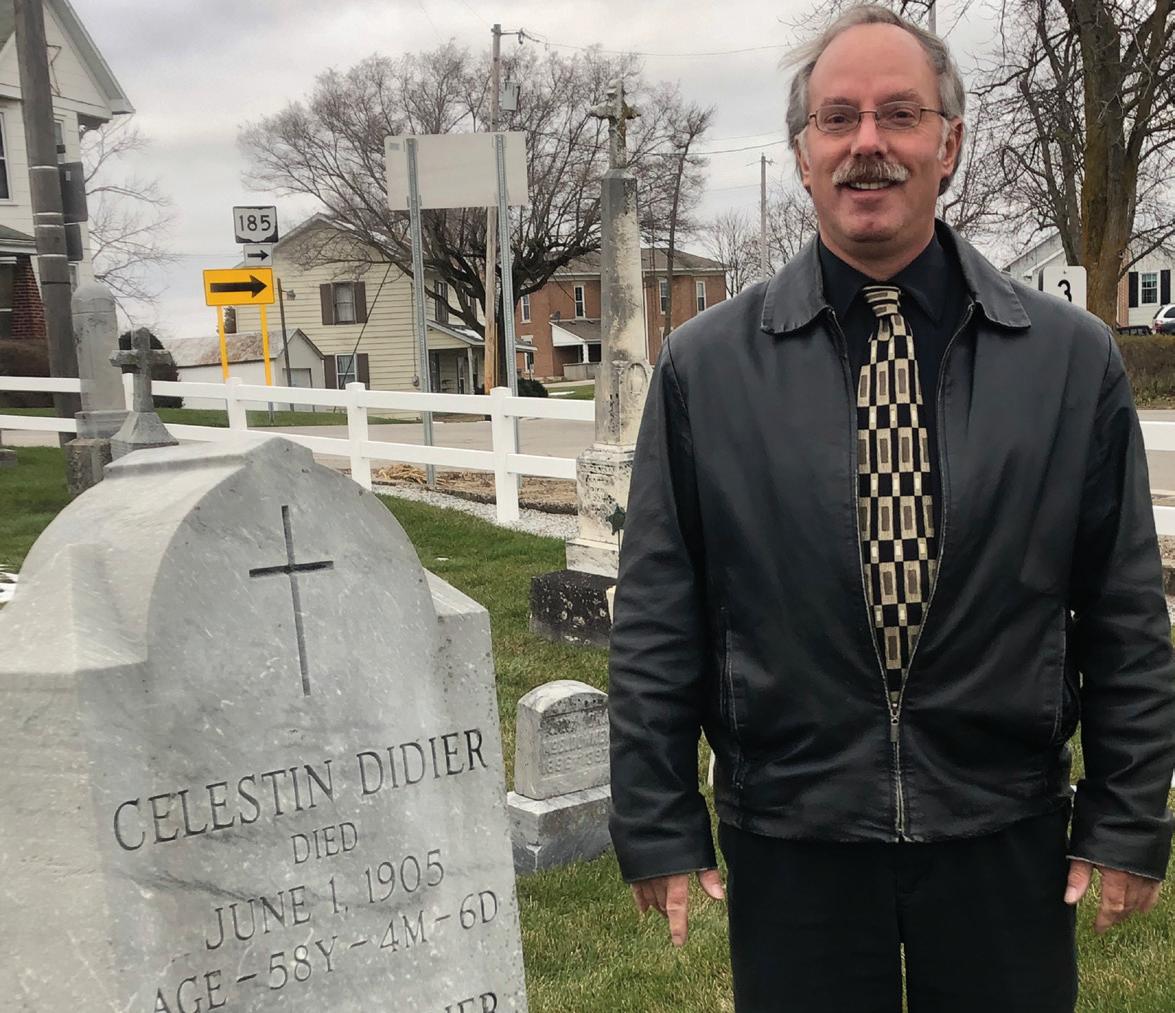
By 1837, their number and influence had grown so much that they petitioned to change the town’s name to Versailles. French settlers also founded the nearby hamlets of Frenchtown and Russia (an homage to French settlers who had fought in the Napoleonic Wars in Russia). The three towns became the hub of French culture in Ohio.

In 1846, the French settlers in the area erected a log church to serve 40 families in Frenchtown. Residents John Berge and Clare Pequignot became the first couple to tie the knot in the congregation. Twenty years later, a more permanent church — christened Holy Family — was erected with distinctive French features, inside and out; it still stands today. Many original French family names persist in the area as well: Subler, Pequignot, Berge, and Didier dot mailboxes in town and in the surrounding countryside.

French flair
In Versailles, the French influence is seen in architecture, murals, and memories.
There is a water feature downtown with cherubs and a wine barrel. Murals with French countryside scenes are on some downtown walls, and a miniature replica of the Arc de Triomphe is in a community park. The city’s logo even incorporates a fleur-de-lis.
But while it may still be visible in the area, the French culture hasn’t necessarily held on with the same tenacity in Ohio as it has in other enclaves in North America.
Deb Pohl, 74, whose ancestors came from Switzerland and France, is president of the Versailles Historical Society. She has memories of two sisters walking around town who still spoke French to one another, but she says most of the French dialect had disappeared by the time she was a teenager.
“I think French-speaking died out with the second generation back from me,” she says.

Not gone yet
Keith Didier, 57, would beg to differ, as he, for one, still speaks French. He takes care of the Holy Family cemetery as well as its heritage — and has become a caretaker of French culture in the area. “We had a lot of the typical traditions — midnight mass, French tarts, noodles,” he says.
The original settlement’s small size, relative to, say, Quebec or even New Orleans, made it tougher to keep traditions alive — a melting ice cube compared to a melting glacier. But other factors might also have been at play.

Pohl, for example, says that after the initial French waves, Prussians, Irish, Germans, English, and others moved to the area, which created a more diverse population.
Esteemed Miami University French professor William Marion Miller examined the sustainability of the area’s




Early French colonial influence can be found all across Ohio, but notably so in the western part of the state, where, for example, the Holy Family Cemetery in Frenchtown has a sign at the entry that reads, “Heureux Les Morts Qui Meuerent Dans Le Seigneur,” which translates to “Blessed Are the Dead Who Die in the Lord.” Keith Didier (opposite page), one of the last French-speakers around, is a caretaker of both the cemetery and the French culture in the area.


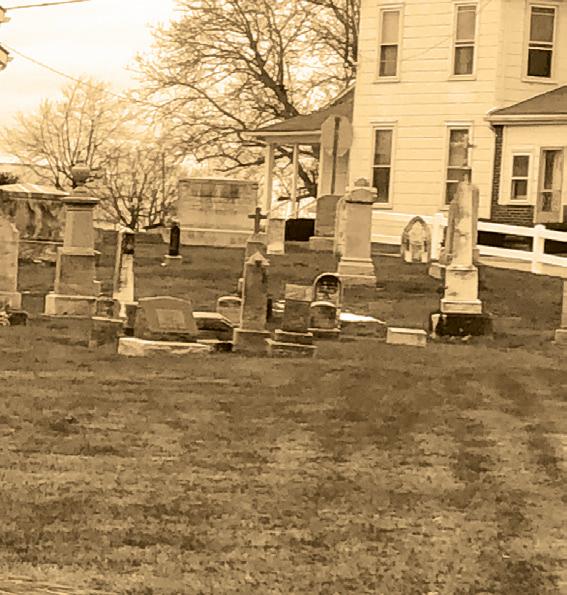
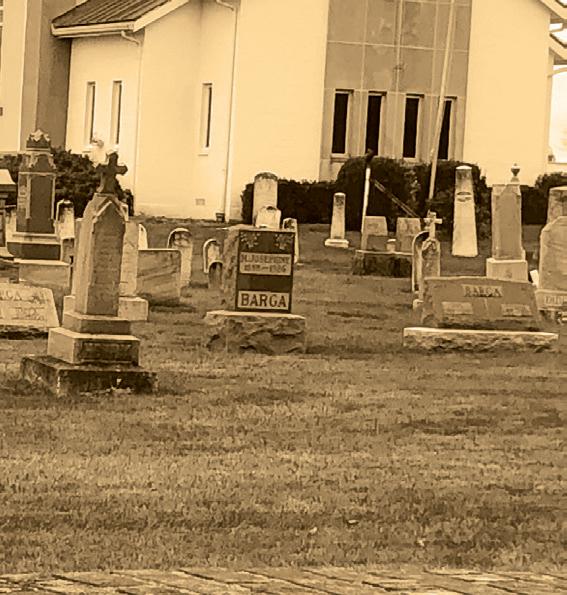


French culture in an article he wrote for the French Review in 1946.
“The French seemed to make no effort to perpetuate their cultural tradition or European heritage, to retain their French customs, or even to keep their native tongue alive,” he wrote. “The French folk wanted to become Americans as quickly as possible.”

Miller, however, drew at least one incorrect conclusion from his research. At the time, he noted that the last of the French settlers lived on rural roads outside of Frenchtown and Russia, and predicted that “ 10 or possibly 15 more years will see the last of these French-speakers.” But he misjudged the tenacity of Francophone culture. Almost 80 years after his article landed in the French Review, the French culture in Darke County, while perhaps not quite a flame, is still at least a warm cultural ember.

































































































































































































































































































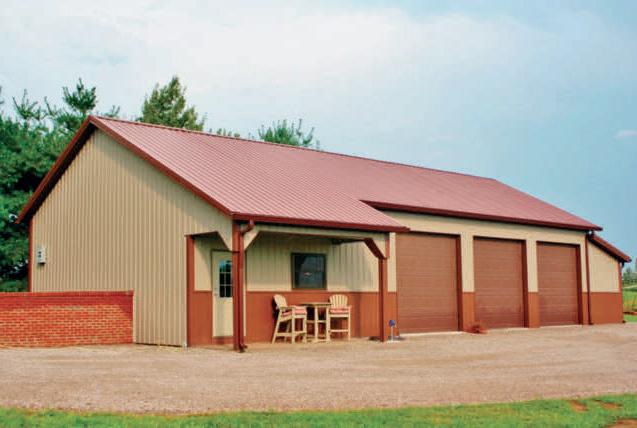






auction, art and craft show, rides, games, beer gardens, entertainment. 419-562-2728 or www. bucyrusbratwurstfestival.com.
AUG. 17–19 – National Tractor Pulling Championships, 13800 W. Poe Rd., Bowling Green. $23–$50; 10 and under free; weekend pass $115–$125 419-354-1434 or www.pulltown.com.
AUG. 18–26 – Allen County Fair, Allen Co. Fgds., 2750 Harding Hwy., Lima, 8 a.m.–11 p.m. $10; 6 and under free. 419-228-7141 or www.allencofair.com.
THROUGH SEP. 10 – NWORRP Museum Summer
Hours, Northwest Ohio Railroad Preservation Inc., 12505 Co. Rd. 99, Findlay, Sat./Sun. 1–4 p.m. $3; 12 and under, $2. Museum tours, quarter-scale train rides, model train displays, games, play area, and more. 419-423-2995, www.nworrp.org, or www.facebook.com/nworrp.
THROUGH OCT. 14 – The Great Sidney Farmers Market, Shelby County Court Square, 100 E. Court St., Sidney, Sat. 8 a.m.–noon. Fresh produce, baked goods, jams and jellies, crafts, plants, and flowers. 937-658-6945 or www.sidneyalive.org.
AUG. 11–13 – Bremenfest, Crown Pavilion, 2 W. Plum St., New Bremen. Food, games, 5K run/ walk, 1-mile fun run, car show, bike tour, live music, parade, food, and much more. http://bremenfest. com.
AUG. 12–13 – “60 Years’ War for Ohio: The American Revolution,” Fort Meigs, 29100 W. River Rd., Perrysburg, Sat. 9:30 a.m.–7 p.m., Sun. 9:30 a.m.–5 p.m. $7–$12; 5 and under free. See battle reenactments and weapon demos, visit Army encampments, and learn about this important chapter in the long fight for the Ohio Country. 419874-4121 or www.fortmeigs.org.
AUG. 17–19 – Bucyrus Bratwurst Festival, downtown Bucyrus. Grilled brats and many other festival foods, daily parades, contests,
AUG. 18–20 – Fort Jennings Fort Fest, St. Rte. 190, Fort Jennings. Military Appreciation weekend features the Tunnel to Towers “9/11 Never Forget” mobile exhibit, War of 1812 and Vietnam War reenactments, and much more. Details at www.fjfortfest.com or www.facebook.com/ FortJenningsPark.
AUG. 19–20 – The Fantastic Tiffin Flea Market, Seneca Co. Fgds., 100 Hopewell Ave., Tiffin, Sat. 9 a.m.–4 p.m., Sun. 9 a.m.–3 p.m., rain or shine. Free; handicapped accessible. 250 to 400 dealers per show. Food available for purchase. 419-447-9613 or www.tiffinfleamarket.com.
AUG. 25–27 – German-American Festival, Oak Shade Grove, 3624 Seaman Rd., Oregon, Fri. 6 p.m.–Sat. 1 a.m., Sat. 2 p.m.–Sun. 1 a.m., Sun. 12–8 p.m. Authentic German food, beer, music, folk dancing, and other entertainment. www. germanamericanfestival.net.
AUG. 26 – Family Fun Day: “Back to School Bash,” Northwest Ohio Railroad Preservation Inc., 12505 Co. Rd. 99, Findlay, 1–4 p.m. $5. Enjoy games, quarter-scale train rides, bounce house, and other fun activities. 419-423-2995, www.nworrp.org, or www.facebook.com/nworrp.
SEP. 1–4 – S.C.R.A.P. Antique Tractor Show, White Star Park, 960 Twp. Rd. 60, Gibsonburg. $4 per day per person. Featuring Allis-Chalmers and Simplicity garden tractors. Antique cars and trucks, tractor pulls, flea market, entertainment, food, crafts, demos, and much more. www.S-C-R-A-P-inc.org.


SEP. 1–7 – Fulton County Fair, Fulton Co. Fgds., 8514 St. Rte. 108, Wauseon. www.fultoncountyfair.com.
SEP. 5–10 – Alumapalooza, Airstream, Inc., 420 W. Pike St., Jackson Center. Festival for people who love Airstream travel trailers; open to owners and nonowners alike. Camping, seminars, entertainment, door prizes, gifts, factory tours, food, and more. 813-200-8877 or http://alumapalooza.com.
SEP. 6 – Down on the Farm Story Time, Proving Ground Farm, 5670 E. Twp. Rd. 138, Tiffin, 10 a.m. Stories and activities are geared for preschoolage children and focus on farming and nature in a picturesque outdoor setting. 419-447-7073, www.conservesenecacounty.com, or follow Seneca Conservation District on Facebook.
SEP. 8–10 – Black Swamp Arts Festival, Wooster and Main, Bowling Green. Free. Fine art, live music, food trucks, beer garden, youth arts, and more. www.blackswampfest.org.
SEP. 9 – Lima Area Concert Band: “When You Wish Upon a Star,” Veterans Memorial Civic Ctr., 7 Town Square, Lima, 7:30 p.m. $15; students free. Featuring the music of Disney, from the movies to popular tunes from the television show. https://limaareaconcertband.org.
SEP. 9–10 – Toledo Lighthouse Waterfront Festival, Maumee Bay State Park, 1750 State Park Rd. #2, Oregon. Arts and crafts, entertainment, kids’ activities, boat rides, silent auction, food. 419-6913788 or www.toledolighthousefestival.com.
SEP. 10 – Flag City Fall Model Train Show, Northwest Ohio Railroad Preservation Inc., 12505 Co. Rd. 99, Findlay, 10 a.m.–3 p.m. $5; 12 and under free. Model trains, toy trains, and railroad memorabilia for sale. Quarter-scale train rides: $2 kids, $3 adults. 419-423-2995, www.nworrp.org, or www.facebook.com/nworrp.
AUG. 18–19 – Parkersburg Homecoming Festival, downtown Parkersburg. Free. Parade, pageants, Rubber Ducky Derby, WV State Arm Wrestling championships, arts and crafts, food concessions, live music, and other fun activities. www. parkersburghomecoming.org.
SEP. 2–10 – West Virginia Sunflower Festival, Sunset Berry Farms, 791 Sunset School Rd., Alderson, 10 a.m.–4 p.m. Sunflowers, butterfly release, flea market, kids’ rides, food, and fun. 304-646-3784 or www. facebook.com/sunflowersatsunset.
Submit listings AT LEAST 90 DAYS prior to the event to Ohio Cooperative Living, Busch Blvd., Columbus, OH 43229 or email events@ohioec.org. Ohio Cooperative Living will not publish listings that don’t include a complete address or a number/website for more information.

location: St. Paul’s Episcopal Church, 317 E. Liberty St. 419-853-6016 or www.ormaco.org.
AUG. 26–27, SEP. 2–4 – Great Trail Arts and Crafts Festival, Great Trail Festival Grounds, St. Rte. 43, 1-1/2 miles south of Malvern (GPS: 6331 Canton Rd., 44644), 10 a.m.–5 p.m. $5–$7, under 12 free. A celebration of American folk art, with contemporary and country crafts, historical lectures and demos, live music, dancing, living history, and much more. 330-794-9100 or www. greattrailfestival.com.
SEP. 9–10 – Antiques in the Woods, Shaker Woods Grounds, 44337 County Line Rd., Columbiana, Sat. 9 a.m.–4 p.m., Sun. 9 a.m.–3 p.m. Top-quality antiques and collectibles, food, and entertainment. 330-482-0214, www.youngstownlive.com/event, or the Shaker Woods Facebook page.
SEP. 9–10 – Appalachian Ohio Antique Power Show and Gathering, Harrison Coal & Reclamation Historical Park, 43672 Stumptown Rd., New Athens, Sat. 10 a.m.–6 p.m., Sun. 9 a.m.–4 p.m. $5 330-401-5129 or www. facebook.com/appalachianohioantiquepowershow.
THROUGH OCTOBER – Quilt Exhibit: “History in Pieces,” Bimeler Museum, Historic Zoar Village. Featuring fine quilts from the National Quilt Museum in Kentucky (including one from an Ohio quilter) and Zoar-made quilts from the 19th century. See website for museum schedule. 800-262-6195 or www. historiczoarvillage.com.
AUG. 18 – Jerry Popiel: “Songs from the 1960s and 1970s,” John Streeter Garden Amphitheater, 2122 Williams Rd., Wooster, 6:30 – 8:30 p.m. Free. Bring your lawn chairs, blankets, and picnics. Rain location: Fisher Auditorium, 1680 Madison Ave. Reservations recommended. Register at www.ormaco.org or call 419-853-6016
AUG. 19 – Native American Day, HeARTland, 8187 Camp Rd., Homerville, 1–3:30 p.m. Free. Flutist Billy Crowbeak Faluski will perform, showcasing some of his handcrafted Native American-style flutes. Historian John Burke will portray Captain Wolf, a Lenape/Delaware Indian who served under Gen. William Henry Harrison and lived in his village on Chippewa Lake in Medina County. 419-853-6016 or visit www.ormaco.org.
AUG. 20–27 – Lorain County Fair, 23000 Fairgrounds Rd., Wellington. Ohio’s second-largest county fair. 440647-2781 or www.loraincountyfair.com.
AUG. 26 – Dane Vannatter: “Tunes from the American Songbook,” Uptown Park, Medina, 7–9 p.m. Free. Bring your lawn chairs, blankets, and picnics. Rain
SEP. 1 – First Fridays on Fourth, 155 N. 4th St., Steubenville, 6–10 p.m. Free. Art, crafts, games, food trucks, live entertainment, and activities to stimulate the imagination. www.theharmoniumproject.org/firstFridays.
SEP. 1–4 – Firelands Labor Day Festival, New London Recreation Park, 2 Blake St., New London. Vendors, concessions, carnival rides and games, truck and tractor pulls, demolition derby, and more. 419-929-4091 or www.newlondonoh.com.
SEP. 2 – Fort Laurens Primitive Fire-Starting Workshop, 11067 Fort Laurens Rd. NW, Bolivar. $15 Experts from Midwest Native Skills Institute will provide guided instruction. Deadline for required pre-registration is Aug. 29. Call 330-874-2059 or email fortlaurens@ gmail.com.
SEP. 2 – Lucas Community Center Car Truck Show, 242 Main St., Lucas, 11 a.m.–4 p.m. Fifteen random drawings at $20 each; must be present to win. Door prizes, 50/50 raffle, silent auction, music, food. Alumni and community event with live music, 6–10 p.m. For more information, contact Dave at 419-571-1264
SEP. 2–3 – Toronto Festival of the Arts, 3rd and Market Sts., Toronto, Sat. 10 a.m.–6 p.m., Sun. 12–5 p.m. Handmade arts and crafts, live music, food, entertainment. www.focusintoronto.com.
SEP. 8 – Lorain County Beekeepers Association Fall Wrap-Up, Life Church, 1033 Elm St., Grafton, 7–9 p.m. www.loraincountybeekeepers.org.

Voted Ohio’s #1 favorite farmers market! 740-593-6763 or www.athensfarmersmarket.org.
THROUGH SEP. 3 – Tecumseh! Outdoor Drama, Sugarloaf Mountain Amphitheatre, 5968 Marietta Rd., Chillicothe, Mon.–Sat. 8 p.m. $30–$50. Witness the epic life story of the legendary Shawnee leader as he struggles to defend his sacred homelands in the Ohio country. www.tecumsehdrama.com.
THROUGH SEP. 30 – The Living Word Outdoor Drama, 6010 College Hill Rd., Cambridge, Fri. 7:30 p.m. August, Fri./Sat. 7:30 p.m. September. Witness the life of Christ on a 400-foot panoramic set at Ohio’s only outdoor Passion Play. 740-439-2761, www.livingworddrama.org, or follow The Living Word on Facebook.
SEP. 9–10 – Old Construction and Mining Equipment Fall Show, Harrison Coal & Reclamation Historical Park, 43672 Stumptown Rd., New Athens, Sat. 10 a.m.–6 p.m., Sun. 9 a.m.–4 p.m. $5. Operating and static displays of antique construction and mining equipment, crawlers, trucks, models, and more. 740-312-5385 or www. facebook.com/OCMES.
SEP. 9–14 – Wayne County Fair, Wayne Co. Fgds., 199 Vancouver St., Wooster. 330-262-8001 or www.waynecountyfairohio.com.
SEP. 10 – Dan Bruce: “Music of the Beatles,” Wadsworth Public Library, 132 Broad St., Wadsworth, 2–3 p.m. Free. Bruce will perform solo guitar arrangements of familiar Beatles tunes. Reservations recommended. Register at www.ormaco.org or call 419-853-6016
SEP. 10 – Cause 4 Paws Pet Expo and Car Show. Firelands Chevy, 2315 Rte. 60, Vermilion, 9 a.m.–2 p.m. Adoptable pets and vendors, classic car show, food trucks, raffle baskets, and 50/50 raffle. Rain date to be announced. Proceeds to benefit Partners With Paws of Lorain County, Inc. 440-897-8696 or lawilber@oberlin. net.
SEP. 10–24 – “Celebrate the Constitution,” Historic Fort Steuben, 120 S. 3rd St., Steubenville, Mon.–Sat. 10 a.m.–4 p.m., Sun. 11 a.m.–4 p.m. Free. Annual exhibit and activities focusing on the nation’s founding document and the issues and personalities of the time. 740-283-1787 or www.oldfortsteuben.com.
as the sand now becomes a dance floor. Music by Shakin’ and Stirred. www.downtownchillicothe.com/ sand-in-the-streets.
AUG. 28 – Noble County Fair, Noble Co. Fgds., Caldwell. $12. www.noblecountyagsociety.com.
SEP. 4–10 – Belmont County Fair, Belmont Co. Fgds., 45420 Roscoe Rd., St. Clairsville. $10. A family tradition since 1849. www.belmontcountyfair.org.
SEP. 8–10 – Ohio River Sternwheel Festival, Ohio River Levee, Marietta. Sternwheel boats, car show, 5K run/walk, live music, kid’s activities, fireworks, and more. https://sternwheel.org.
THROUGH DECEMBER – Athens Art Market, Athens Community Center, 701 E. State St., Athens, Sat. 9 a.m.–noon. Members of Athens Art Guild offer handmade and juried arts including pottery, live edge furniture, fiber arts, paintings, glassware, jewelry, wood, and much more. For more information, email athensartguildevents@gmail.com.
THROUGH DECEMBER – Athens Farmers Market, Athens Community Center, 701 E. State St., Athens, Sat. 9 a.m.–noon; Apr. 20–Nov. 23, Wed./Sat. 9 a.m.–noon.
AUG. 19 – Classic Cruise-In Car Show, downtown Cambridge, 9 a.m.–4 p.m. Free. 740-439-2238 or https://downtowncambridge.com/home/things-to-do/ events.
AUG. 26 – Sands in the Streets Volleyball Tournament and Beach Fest, North Paint Street, Chillicothe, 8 a.m.–10 p.m. $5. Join us downtown for fun in the sand and come cheer on your favorite team. After the tournament, prepare to take your shoes off
SEP. 9 – “An American Celebration” featuring the Music City Quartet, Majestic Theatre, 45 E. Second St., Chillicothe, 7 p.m. $20–$25. With recording artists Jeremy Abbott, Lily Mae Border, Ben McCann, and other surprise guests. www.majesticchillicothe.net.
SEP. 8–10 – Salt Creek Valley Festival, Richmond Dale. Entertainment, craft vendors, car show, concessions, and family fun. www.facebook.com/ profile.php?id=100057692768515
AUG. 11–13 – Coshocton Sunflower Festival, Coshocton KOA, 24688 Co. Rd. 10, Coshocton. $12–$20 See over 50 varieties of sunflowers in the 4-acre field. Ticket includes admission, wagon ride to the field, and a sunflower of your choice. Live music, food trucks, wine and beer garden, and crafts vendors. 740-502-9245 or www.coshoctonsunflowerfestival.com.
AUG. 14–20 – Muskingum County Fair, Muskingum Co. Fgds., 1300 Pershing Rd., Zanesville. $8; 5 and under free. www.muskingumcofair.com.
under 12 free. New location. Flint knapping demos, primitive fire starting, cordage making, artifact ID, and more! 419-632-4274 or 330-440-3625
SEP. 4 – Labor Day Flea Market, Town Square, Sunbury, 9 a.m.–4 p.m., rain or shine. Free. Antique vendors, craft vendors, children’s activities, food trucks, and much more. sbwkiwanis@gmail.com or www.facebook.com/ sbwkiwanis.
THROUGH SEP. 30 – Sunbury Farmers Market, Sunbury Town Square, 9 E. Granville St., Sunbury, Sat. 9 a.m.–noon. Offering local handmade, homemade, and homegrown products. 740-513-9192 or sunburyohiofarmersmarket@gmail.com.
THROUGH OCT. 28 – Coshocton County Farmers Market, 22375 Co. Rd. 1A, Coshocton, Sat. 8:30 a.m.–noon. Local fresh produce, baked goods, and artisan crafts at our new location by the Walhonding River. market.manager@coshfarmmarket.org or www. facebook.com/coshoctonfarmersmarket.
THROUGH OCT. 28 – Spring Farmers Market, Adornetto’s, 2224 Maple Ave., Zanesville, Sat. 9 a.m.–noon. Locally grown produce, homemade food, locally raised/processed meat, farm eggs, Ohio cheese, and more. www.zanesvillefarmersmarket.org.
THROUGH OCT. 29 – Rock Mill Days, Stebelton Park at Rock Mill, 1429 Rockmill Place NW, Lancaster, Wed./ Sat. 11 a.m.–2 p.m., Sun. 1–4 p.m. Free. Tour the restored 1824 gristmill, walk on the covered bridge, and enjoy the view of Hocking River Falls. 740-243-4436 or www. fairfieldcountyparks.org.
AUG. 10, SEP. 14 – Inventors Network Meeting, The Point at Otterbein University, 60 Collegeview Rd., Westerville 43081, 7 p.m. Presentations about the invention process. Zoom meetings Aug. 17 and Sep. 21 at 7 p.m. 614-470-0144 or www.inventorscolumbus.com.
AUG. 15, 29, SEP. 12 – Farmers Market, Roseville Branch Library, 41 N. Main St., Roseville, 4–6:30 p.m. Sponsored by the Roseville Branch Library Friends Group. Book sale planned for Aug. 29 740-697-0237 or juanita@muskingumlibrary.org.
AUG. 18–19 – Carroll Community Festival, Bessie Benson Park, Center Street, Carroll. Free. www. carrollareahistoricalsociety.weebly.com.
AUG. 18–20 – Fairfield County Antique Tractor Club Tractor and Truck Show, Fairfield Co. Fgds., 157 E. Fair Ave., Lancaster. Features Minneapolis-Moline, Oliver, and Cockshutt tractors. Field demos, toys, hit-miss engines, steam engines, tractor pulls, and more. 740-407-2347 or dstractorlover@sbcglobal.net (Doug Shaw); www. fairfieldcountytractorclub.com. Camping contact: 740304-4170 or gebader71@gmail.com (Glen Bader).
AUG. 26–27 – Columbus Fiery Foods Festival, Genoa Park, 303 W. Broad St., Columbus, Sat. 11 a.m.–8 p.m., Sun. noon–7 p.m. A celebration of all things spicy, bringing together restaurants, hot sauce and salsa makers, and vendors from around the country. Also features an artisan market, food trucks, contests, and entertainment. www.columbusfieryfoods.com.
AUG. 27 – Lancaster Community Band Outdoor Concert, Rising Park, 1100 N. High St., Lancaster, 4 p.m. Free. Please bring blanket or lawn chair. 740-756-4430
SEP. 1–3 – Flint Ridge Knap-In, Coshocton Co. Fgds., 724 S. 7th St., Coshocton, Fri./Sat. 9 a.m.–5 p.m., Sun. 9 a.m.–3 p.m., rain or shine. $7 per vehicle, $3 walk-ins,
SEP. 7–9 – Marion Popcorn Festival, downtown Marion. Free. Parade Thur. 6 p.m. Concerts, rides, games, arts and crafts, 5K run/walk, food, and, of course, popcorn for all! 740-387-FEST (3378) or www. popcornfestival.com.
SEP. 8–9 – Lithopolis Honeyfest, Columbus Street, Lithopolis, Fri. 3–7 p.m., Sat. 10 a.m.–7 p.m. Join us for our sweet 16th year! Bee beard, mead, local honey, craft vendors, food trucks, bake-off, photo and honey contests, and live music. good2bee@lithopolishoneyfest. com or www.lithopolishoneyfest.com.
SEP. 8–9 – Ohio State Trappers Association
Convention, Madison Co. Fgds., 205 Elm St., London, 8 a.m.–5 p.m. Trapping demos, vendors, tailgaters, and much more. Auction Saturday starting at 6 p.m. 330-4658762 or www.ohiostatetrapper.org.
SEP. 9 – Dave Powers Trio, Knox Memorial, 112 E. High St., Mount Vernon, 7:30 p.m. Doors open at 6:30 p.m. $30 740-462-4278 or www.mvac.org.
SEP. 9 – Marion Popcorn Festival 5K, Marion, 9 a.m. Starting line will be at Shamrock Insurance Agency, 114 W. Church St. Register at https://racepenguin.com/ events/popcorn-festival-5k. For questions, email 5k@popcornfestival.com or call 740-272-1148
SEP. 10 – Columbus Paper, Postcard, and Book Show, Ohio Expo Center, Rhodes Bldg., 717 E. 17th St., Columbus, 9 a.m.–4 p.m. $6. Vintage paper collectibles. 614-206-9103 or www.facebook.com/Columbus-PaperShow-134469001768
AUG. 18 – Bluegrass Night, Fibonacci Brewing Company, 1445 Compton Rd., Cincinnati, 7–9 p.m. Free. Enjoy lively bluegrass music by Vernon McIntyre’s Appalachian Grass, a wide variety of craft beers at the Beer Garden, and food truck eats. 513-832-1422 or http://fibbrew.com.
AUG. 18–26 – The Great Darke County Fair, Darke Co. Fgds., 800 Sweltzer St., Greenville. $7, under 12 free. $25 for 9-day pass. 937-548-5044 or www.darkecountyfair.com.
AUG. 19 – Southwestern Ohio Farm Toy Collector Club Annual Show, Highland Co. Fgds., Hillsboro, 9 a.m.–3 p.m. 937-393-3215 or www.facebook.com/ SWOFTCC.
www.libertyhome.net, or follow Liberty Home Association on Facebook.
SEP. 8–10 – Clinton County Corn Festival, Clinton Co. Fgds., 958 W. Main St., Wilmington. $4, under 12 free; weekend pass $7. Featuring Massey Ferguson and related companies. Tractor and antique displays, engines, live music, games, crafts, food, and more. 937383-5676 (Dale Mayer) or www.cornfestivalonline.com.
SEP. 9 – Preble County Park District 20-Year Celebration, Wild Hearts African Farm, 8079 Salem Rd., Lewisburg, 4–8 p.m. Music by Rum River Blend Band, dinner, zoo tour, photo contest, and more. 937-962-5561, pcpdevents@gmail.com, or www.preblecountyparks.org.
THROUGH AUG. 31 – Uptown Music Concert Series, Uptown Park, Oxford, Thur. 7 p.m. Free. 513-523-8687 or www.enjoyoxford.org.
THROUGH SEP. 27 – Bluegrass Wednesdays, Vinoklet Winery, 11069 Colerain Ave., Cincinnati, Wed. 6:30–8:30 p.m. Dinner, wine, and free entertainment by Vernon McIntyre’s Appalachian Grass. Reservations recommended. 513-385-9309, vinokletwinery@fuse. net, or www.vinokletwines.com.
AUG. 12 – Vernon McIntyre’s Appalachian Grass, Ox Chalks the Walk, Oxford Community Arts Center, 10 S. Locust St., Oxford, noon–2:30 p.m. Free. Outdoor street festival with live bluegrass, chalk artists, food trucks, crafters, and artists. 513-524-8506, info@oxarts.org, or https://oxarts.org.
AUG. 26 – The Tour De Donut, downtown Troy. A fun, unique bicycle event, where your ability to eat donuts is just as important as your ability to ride your bicycle fast! www.thetourdedonut.com.
AUG. 26 – Vernon McIntyre’s Appalachian Grass, Hamilton’s Urban Backyard, 501 Main St., Hamilton, 7–10 p.m. Free. Enjoy an evening of lively bluegrass music. Local craft brews and food trucks available. Consider bringing a lawn chair. 513-893-9482 or www. hubhamilton.com.
SEP. 1–3 – Liberty Home Oktoberfest, Liberty Home German Society, 2361 Hamilton Cleves Rd., Hamilton, Fri. 6–11 p.m., Sat. 1–11 p.m., Sun. 1–8 p.m. 513-571-6198,
SEP. 9 – Troy Porchfest, downtown Troy, 10:30 a.m.–7 p.m. Over 40 bands in a hodgepodge of styles and genres will be playing throughout the Southwest Historic District on porches, patios, yards, and lots. See schedule and map at www.troyhayner. org/porchfest.html.
SEP. 9 – Vernon McIntyre’s Appalachian Grass, Vinoklet Art and Wine Festival, 11069 Colerain Ave., Cincinnati, noon–3 p.m. Free. L:ively bluegrass in one of the most beautiful places in Cincinnati! This fun festival, featuring dancing, singing, and shopping, runs Sep. 8–10, noon–11 p.m. See website for details and complete entertainment lineup. 513-385-9309, vinokletwinery@fuse.net, or www.vinokletwines.com.

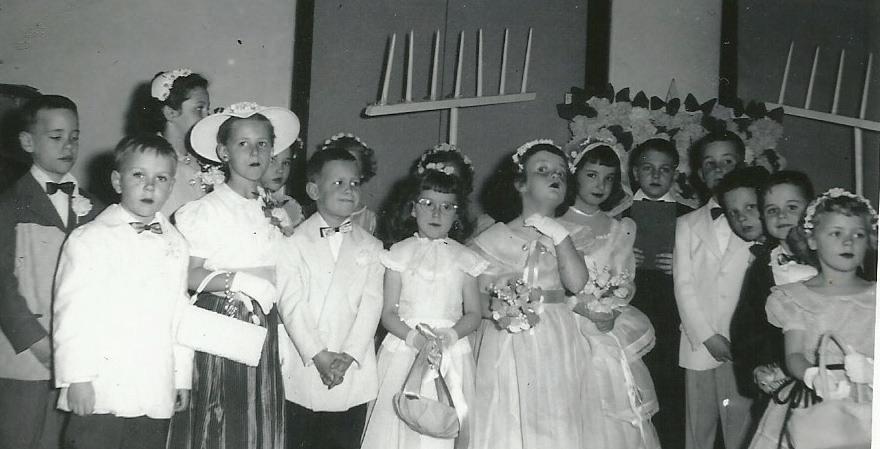
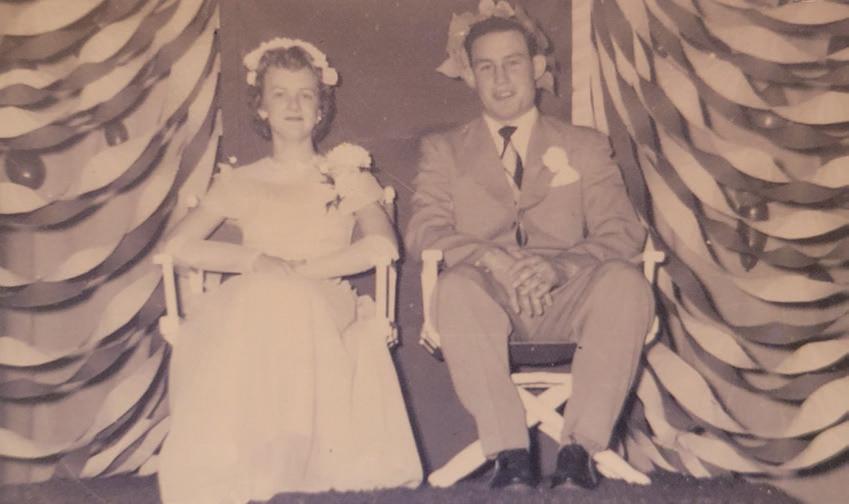
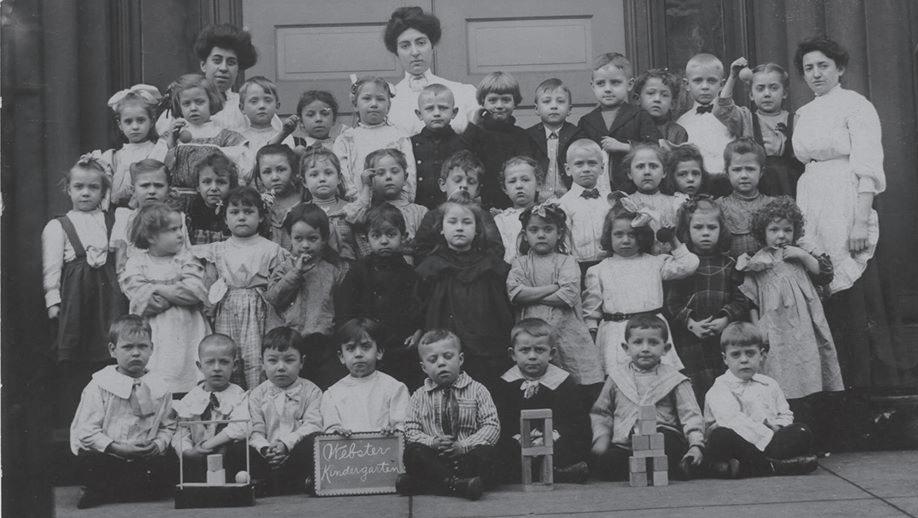


For November, send “Raking leaves” by August 15; for December, send “Holiday baking” by September 15. Upload your photos at www.ohiocoopliving.com/memberinteractive.
June
Name: Electric co-op name: Email address:






*Must
Sponsored by The Ohio State University, Farm Science Review is the largest agricultural event in our region, drawing more than 130,000 people each year. Stop

